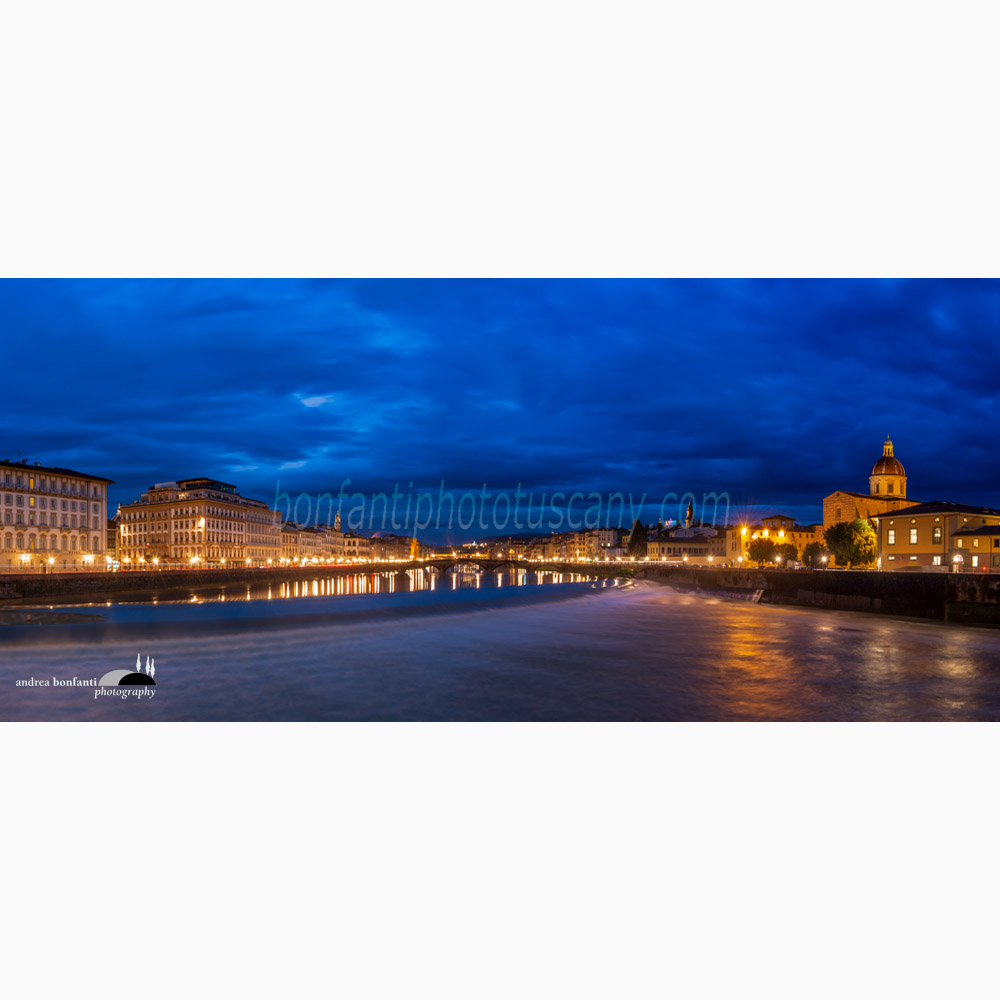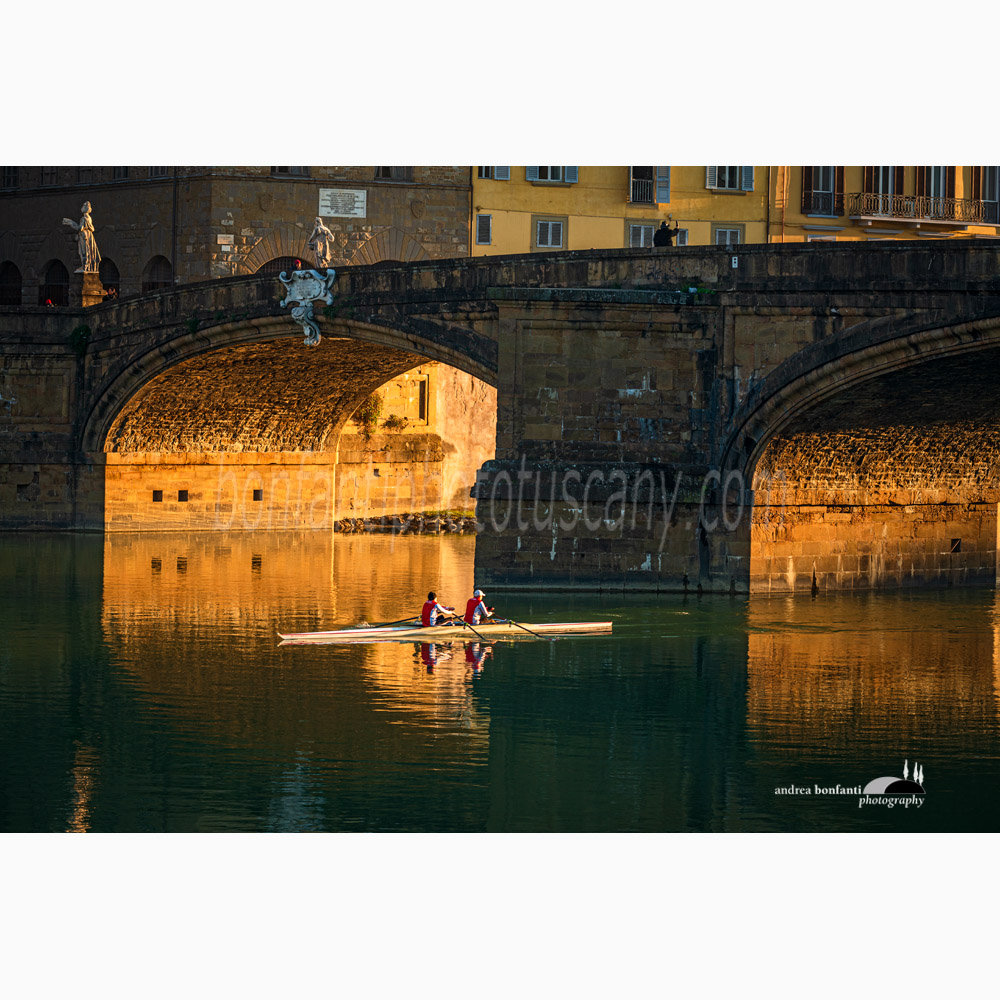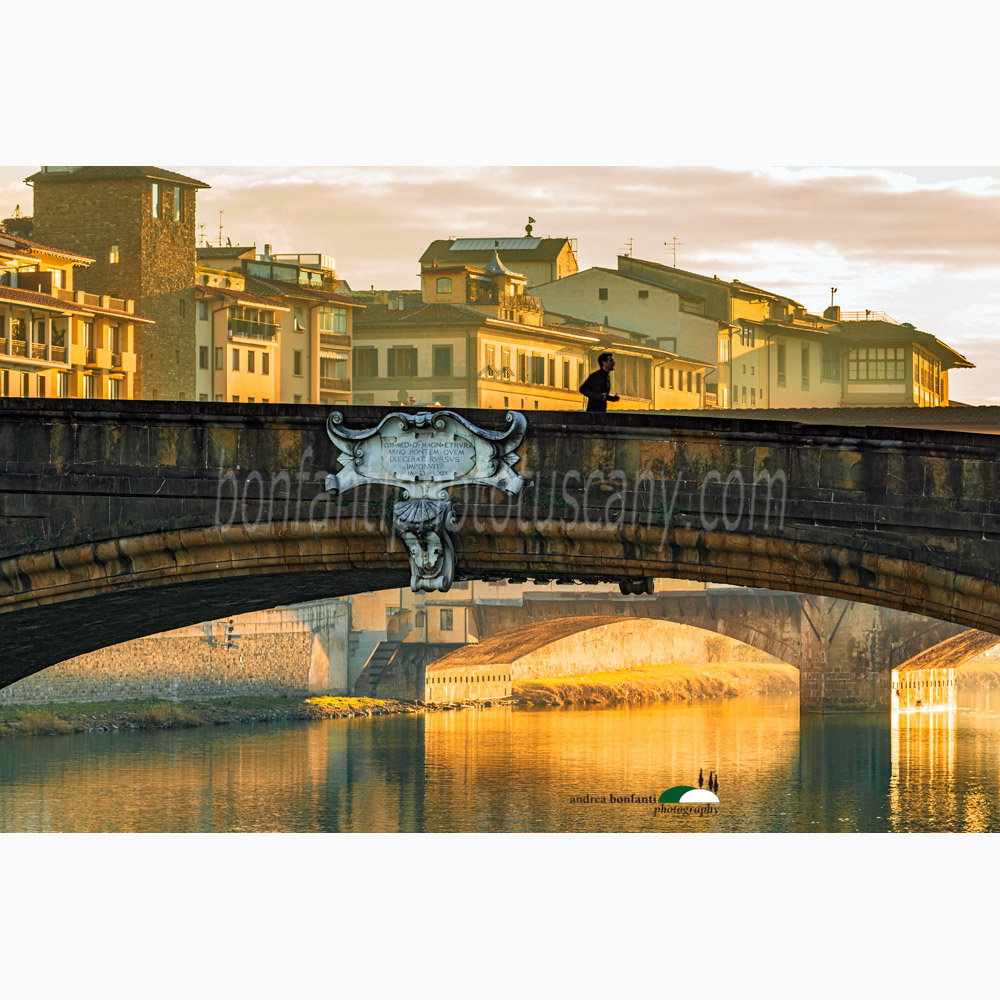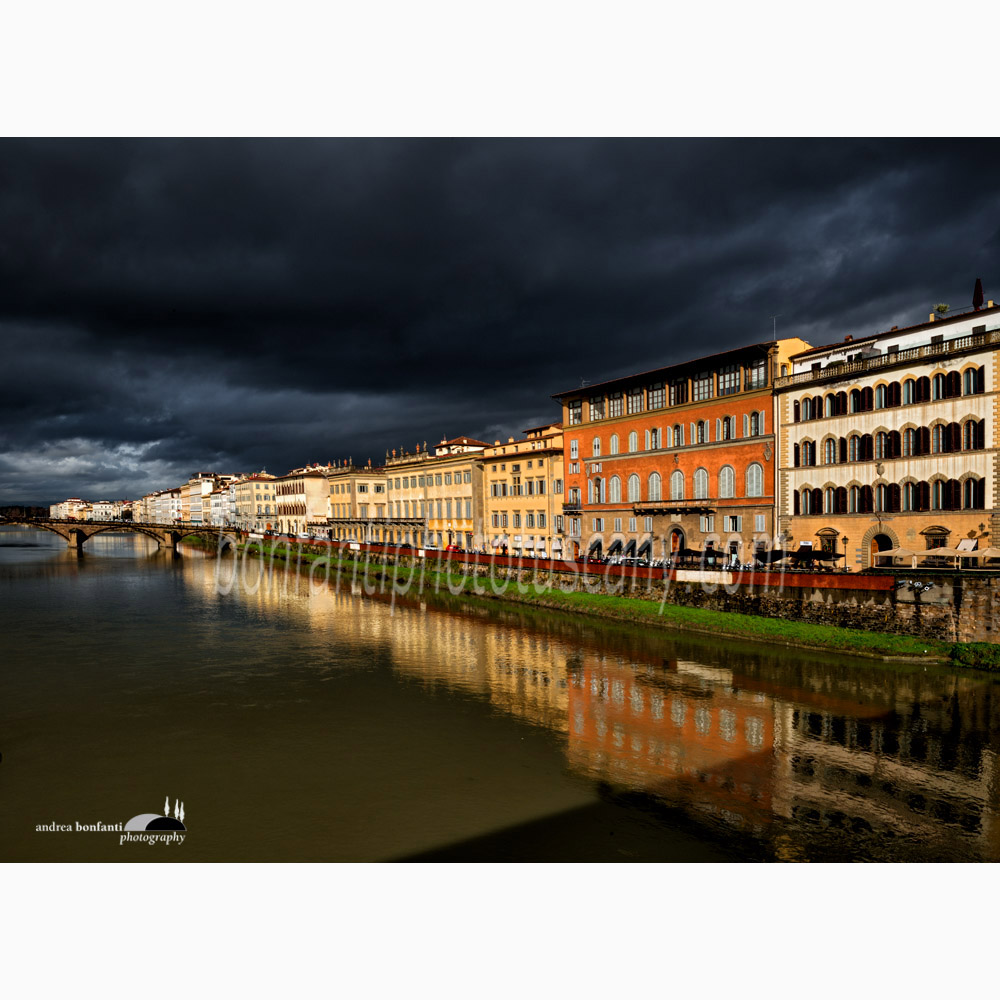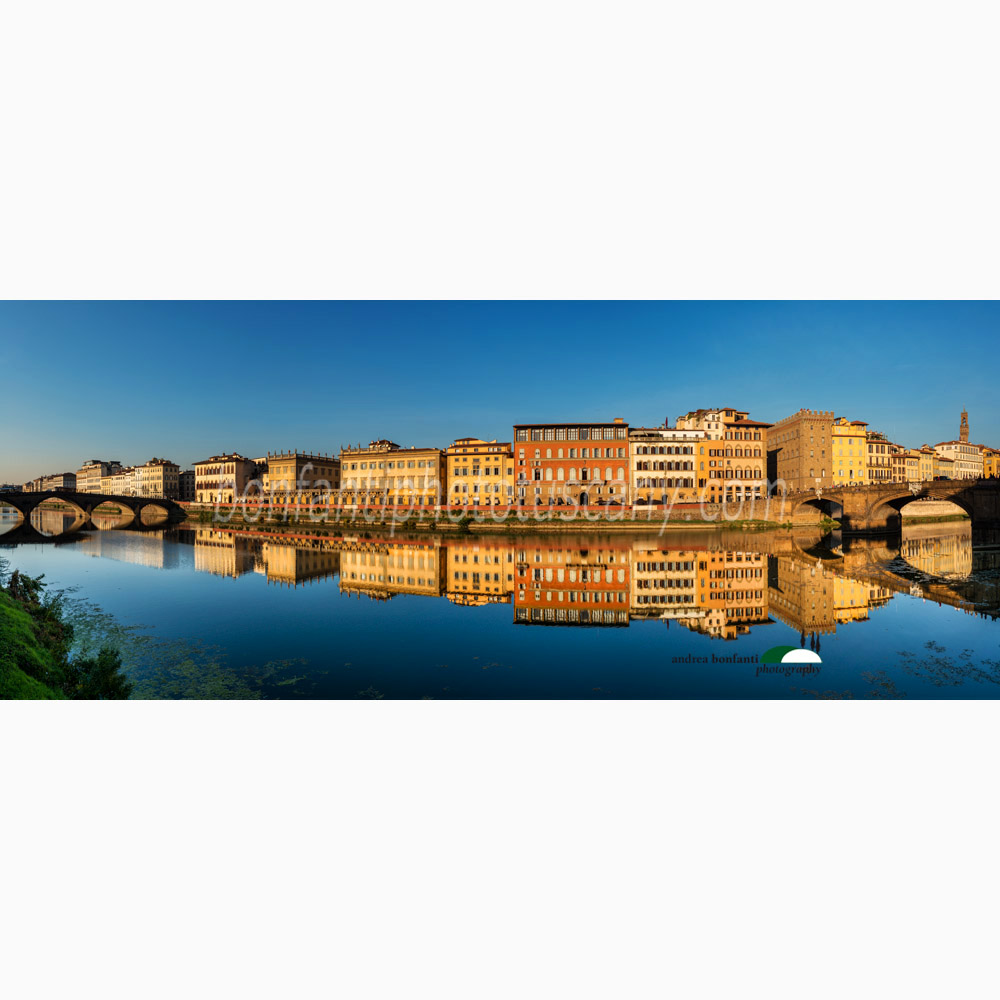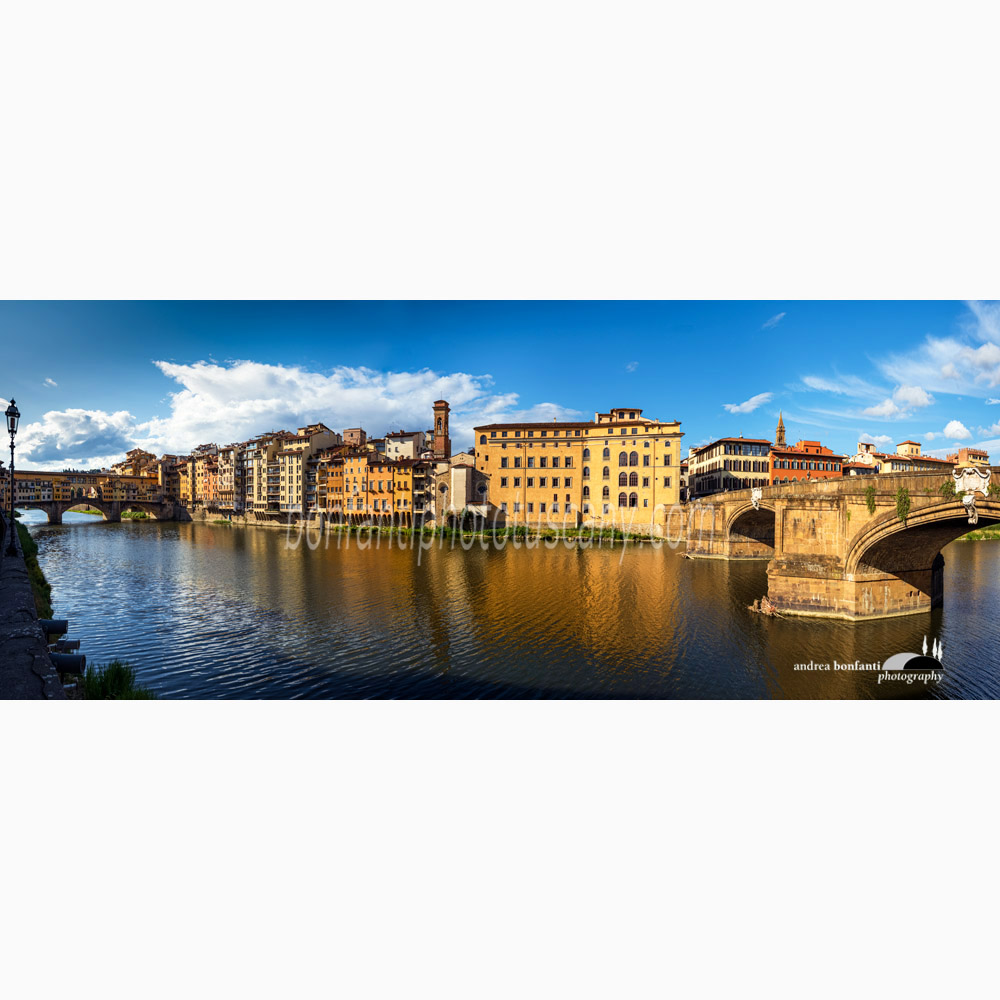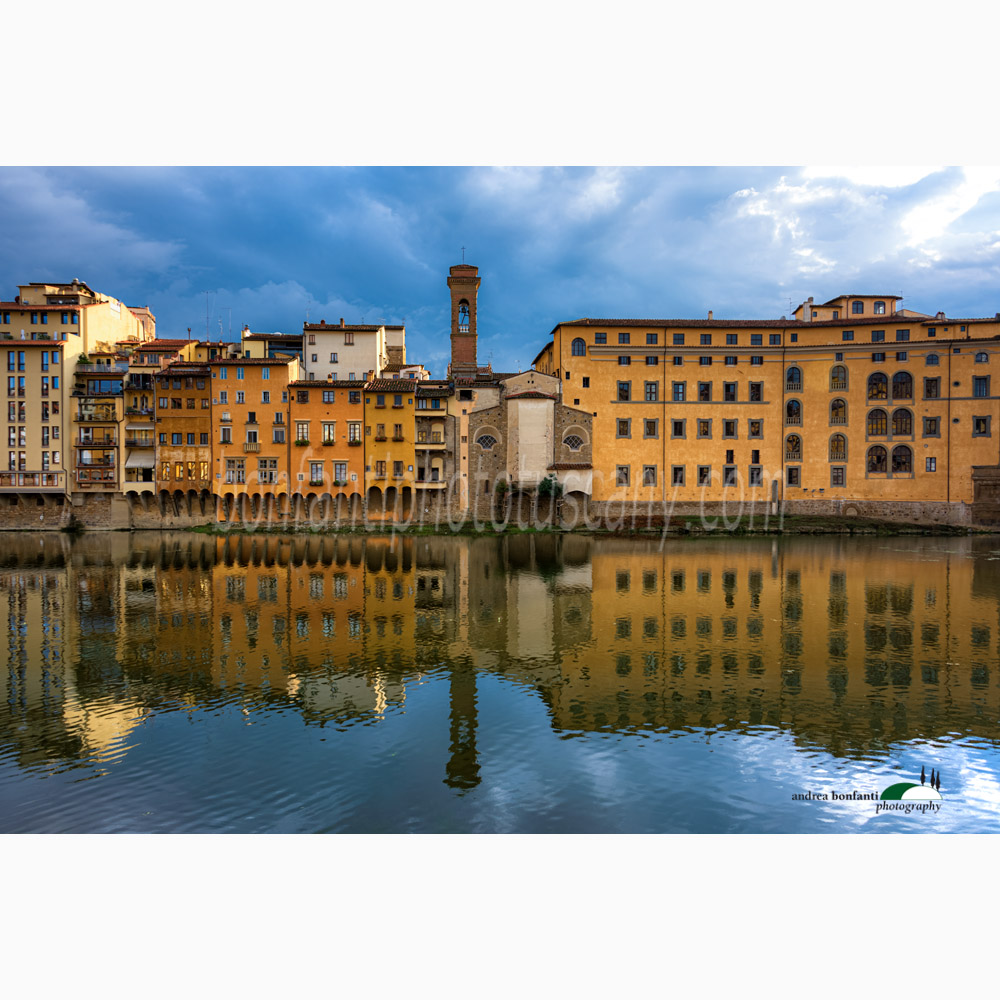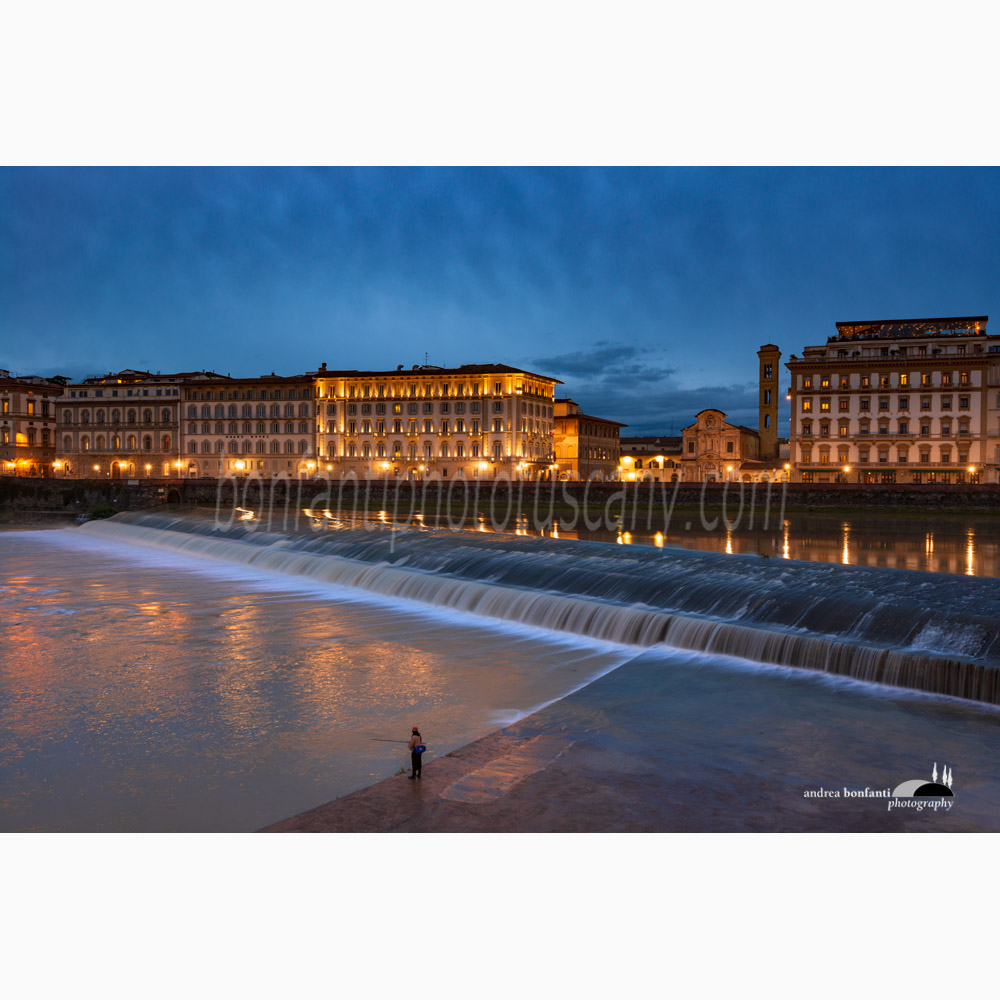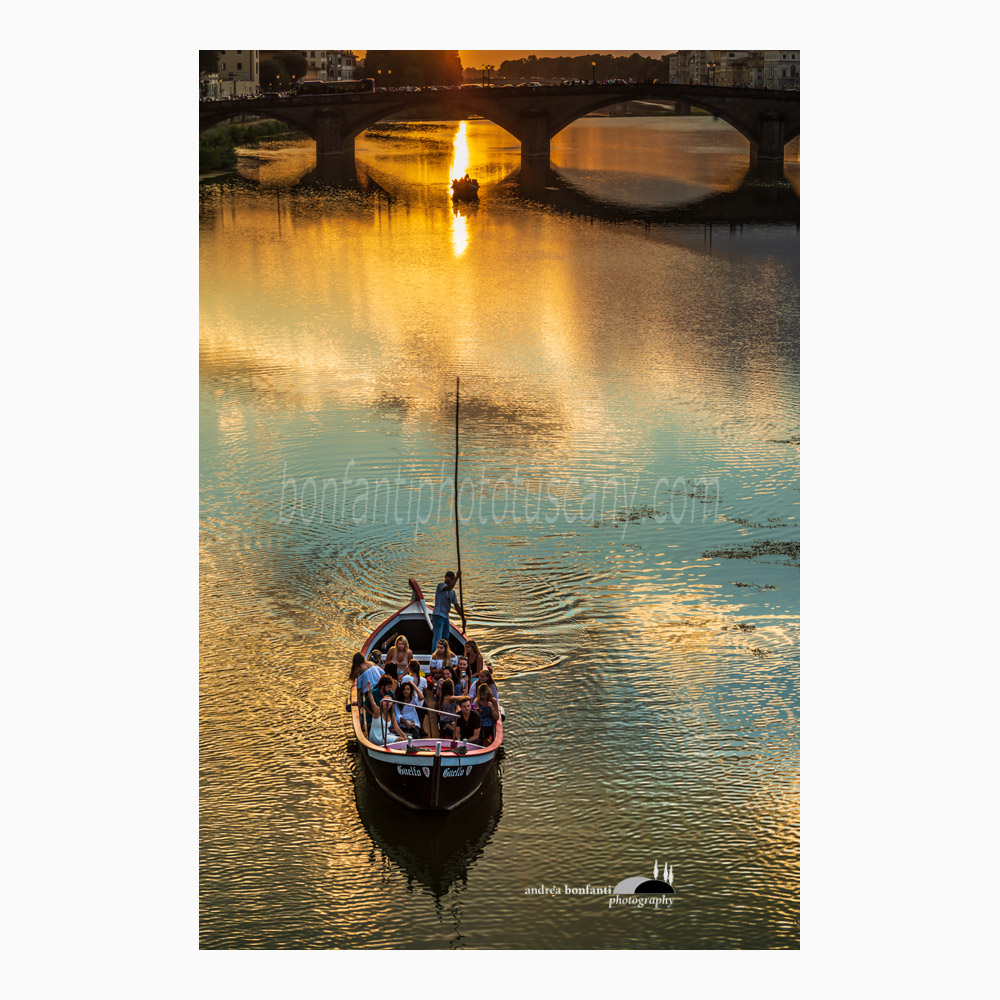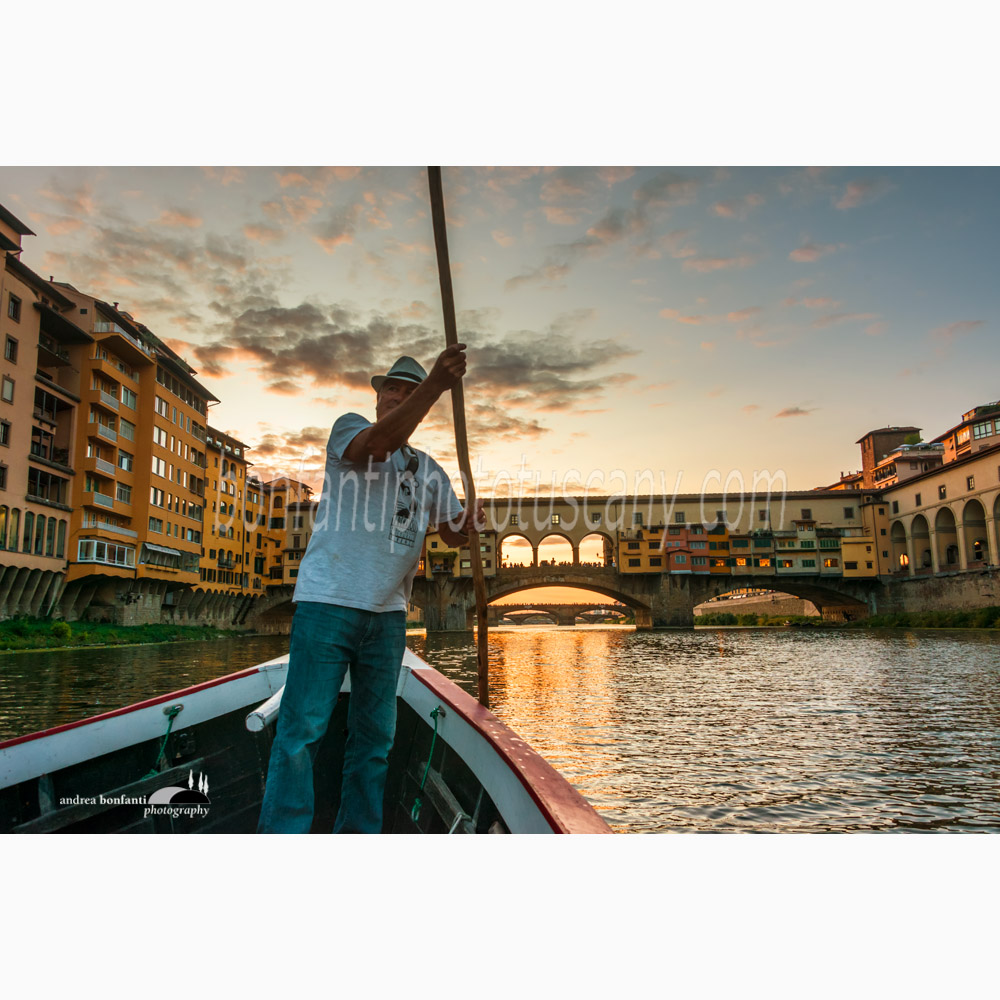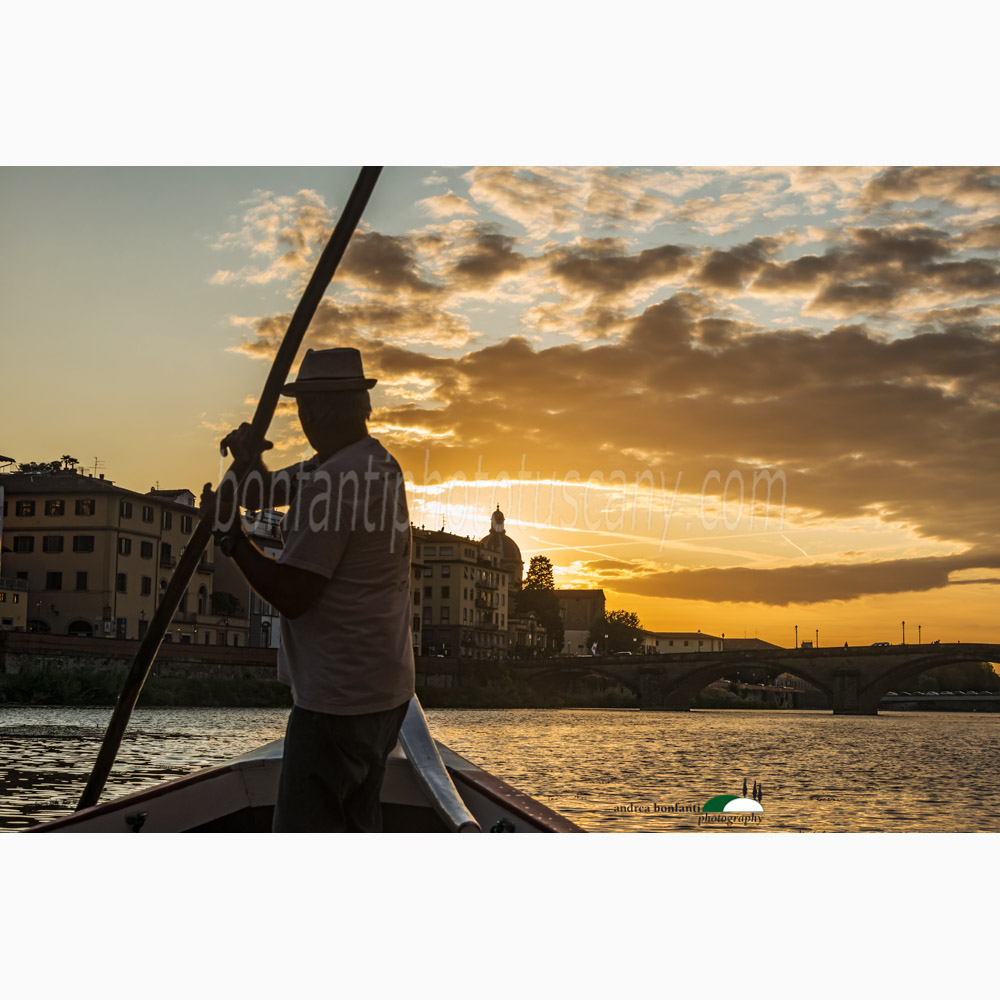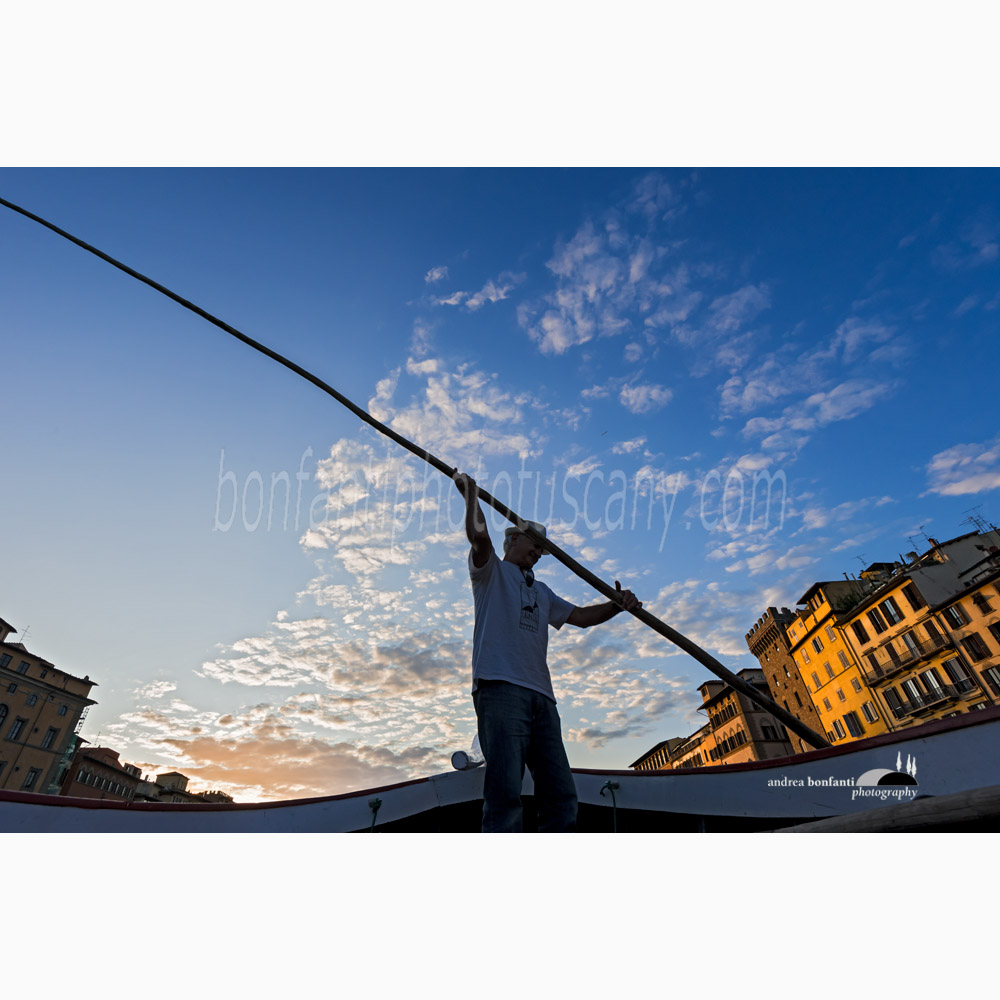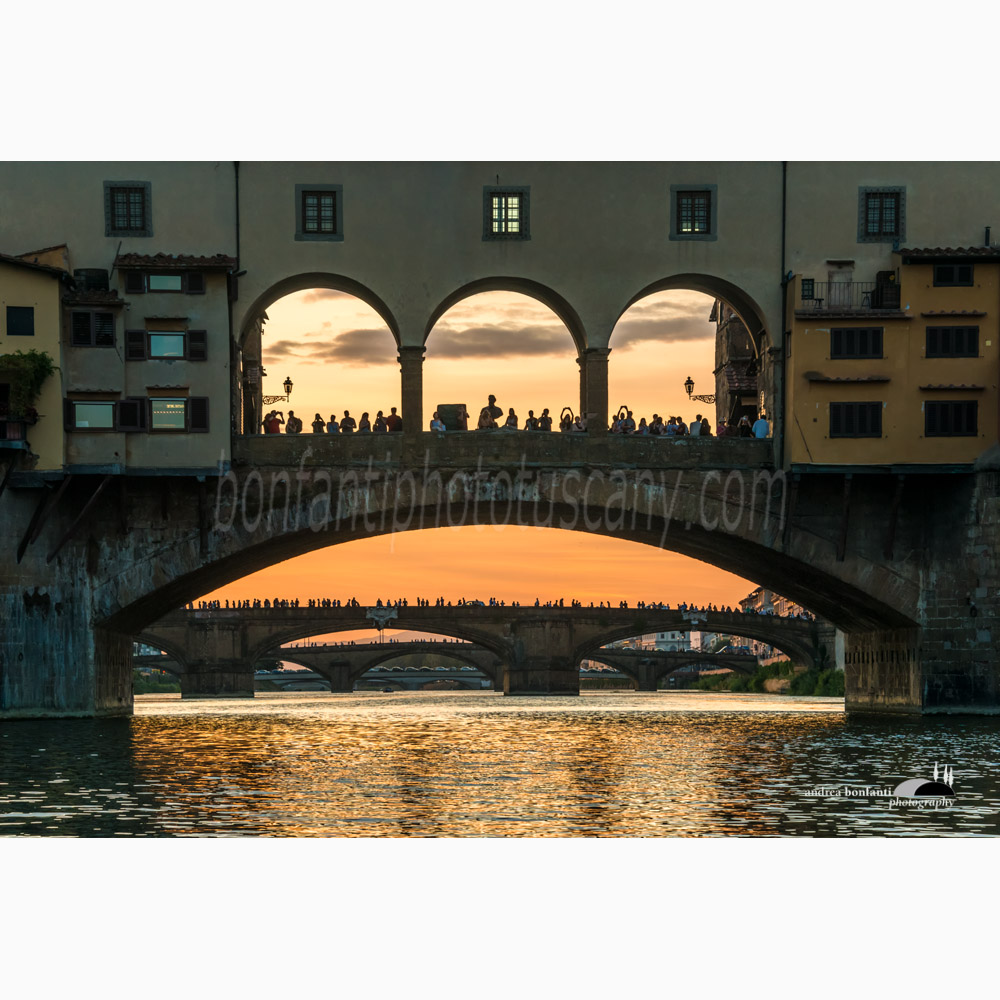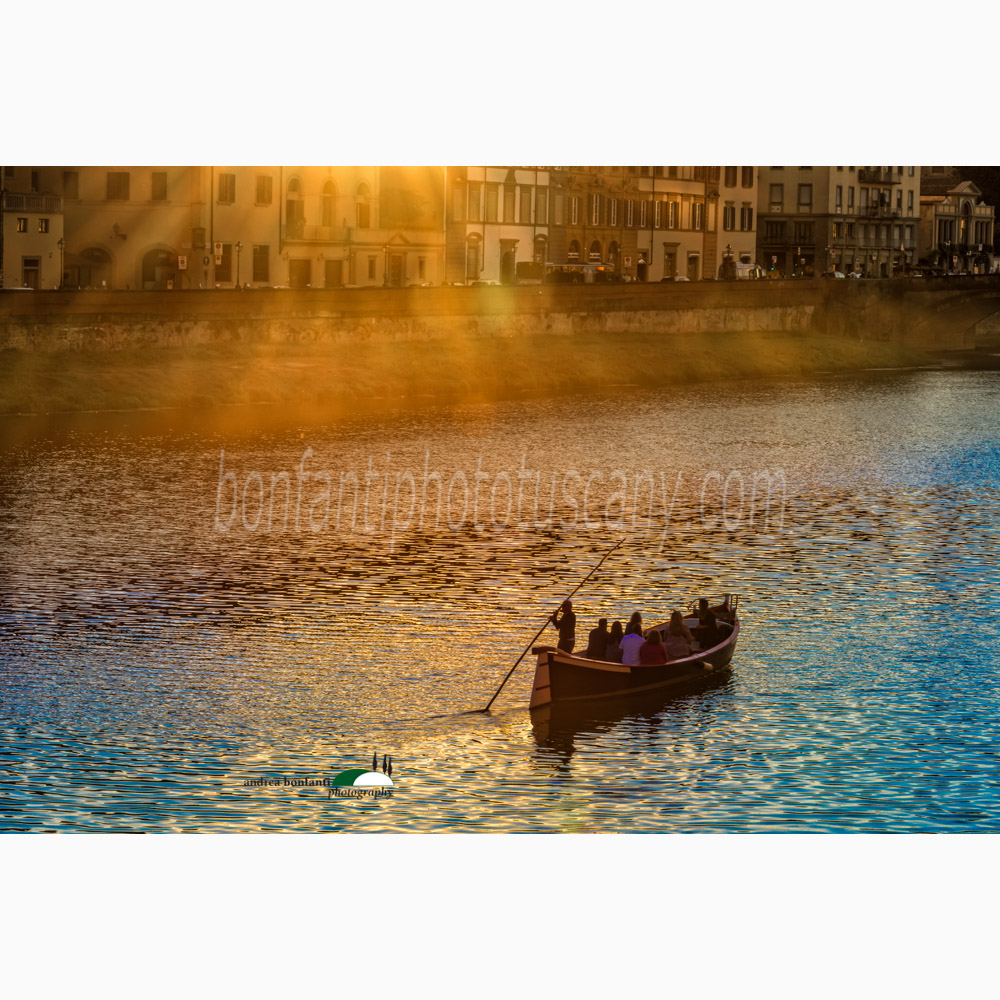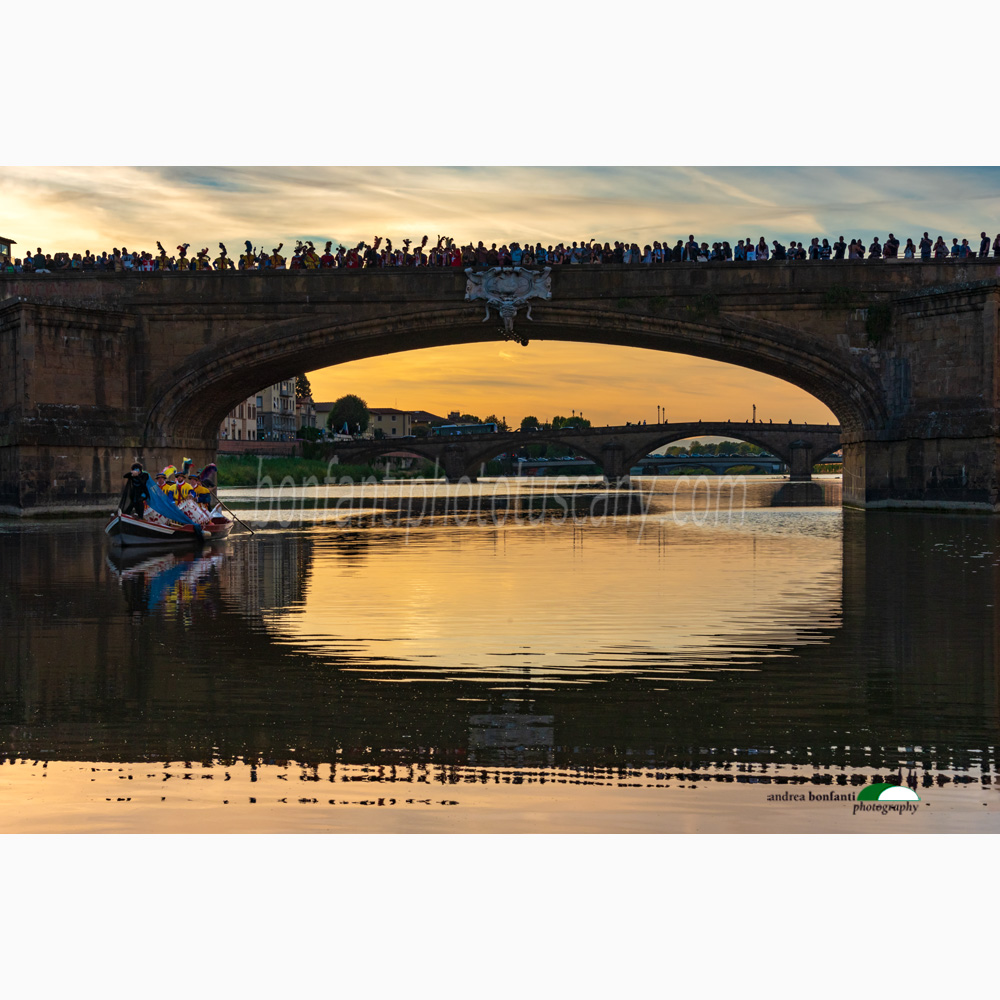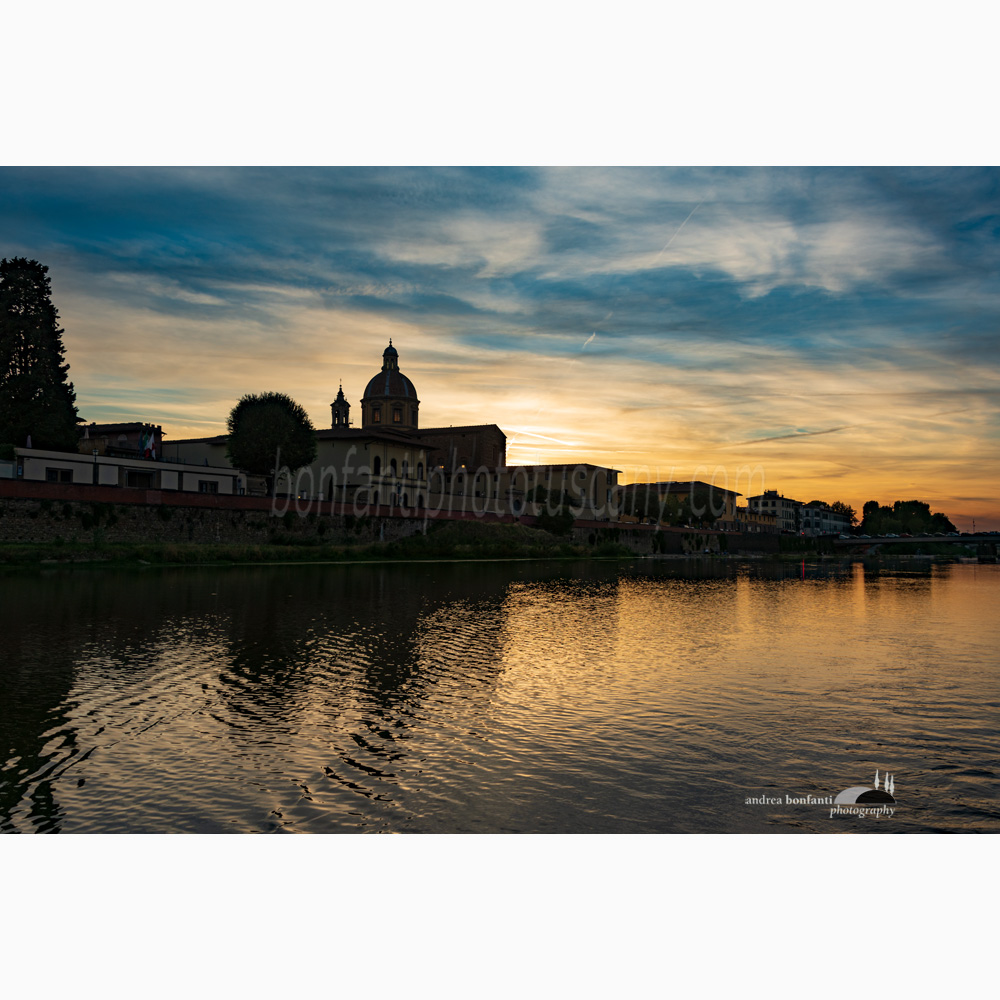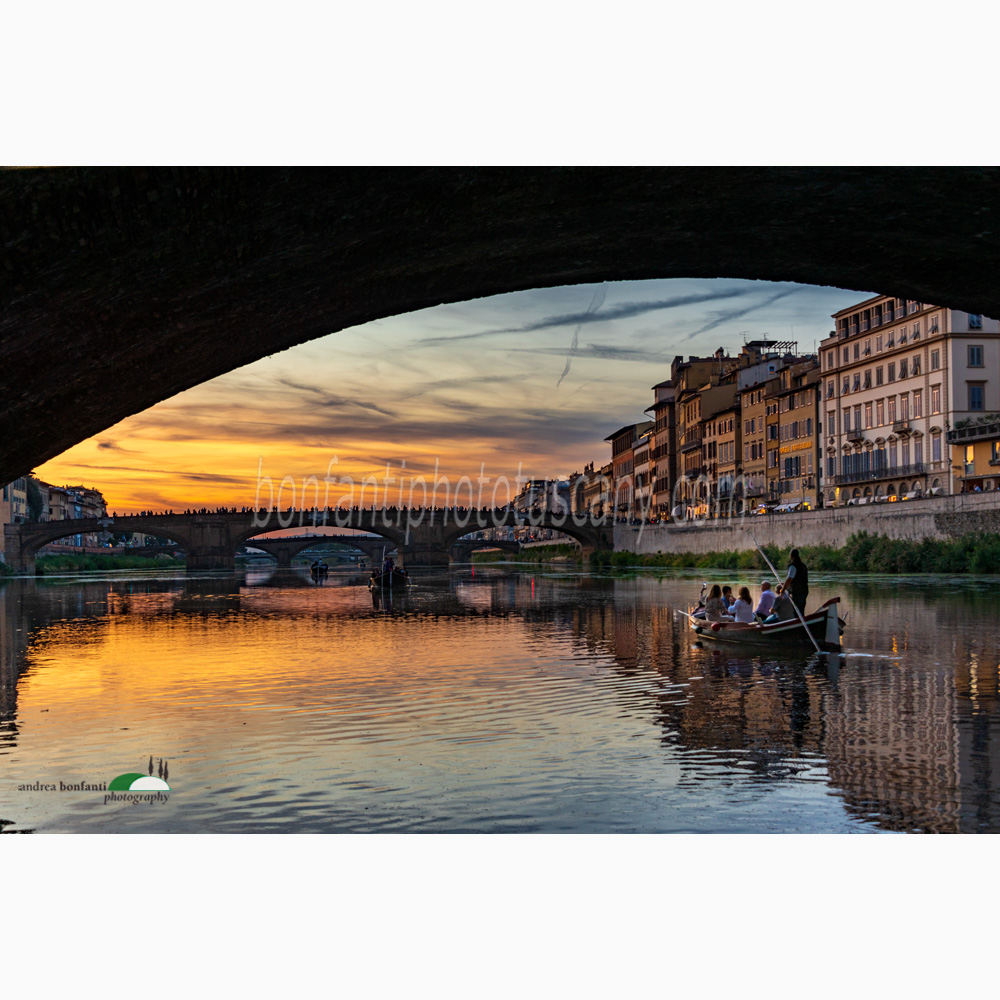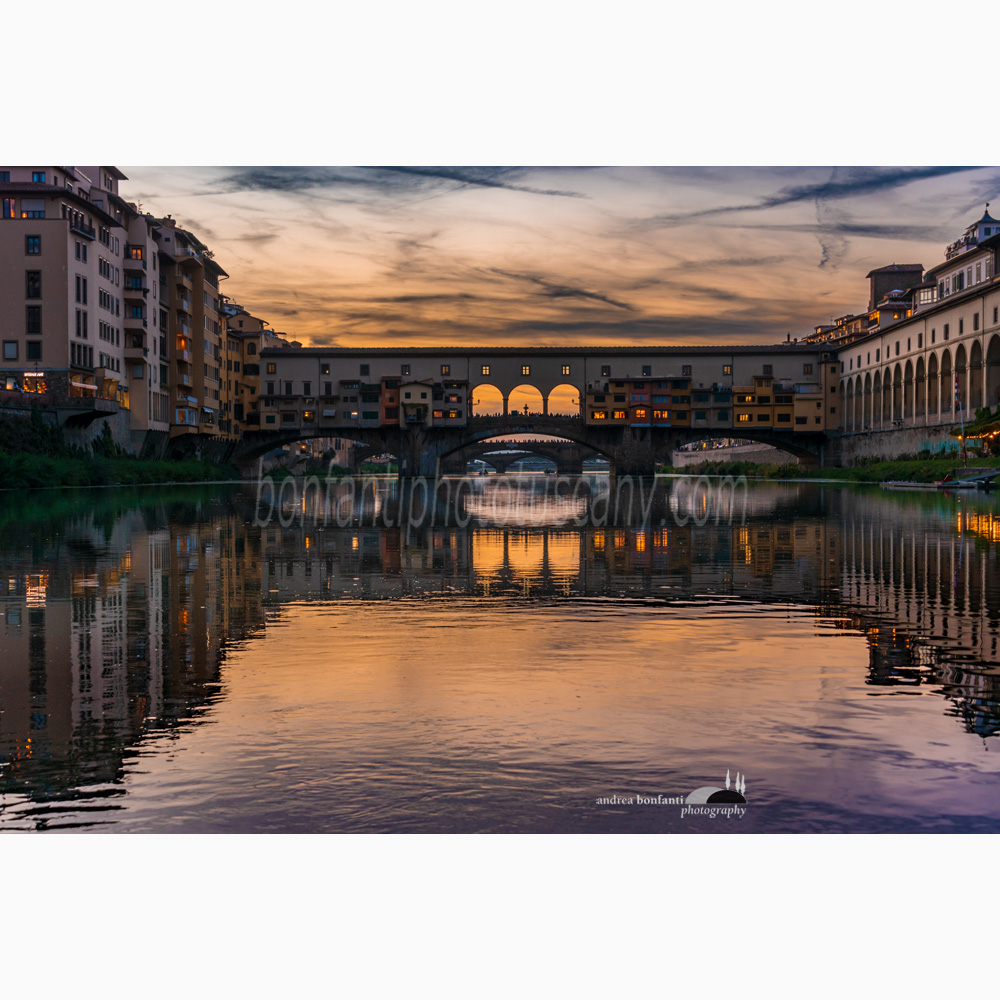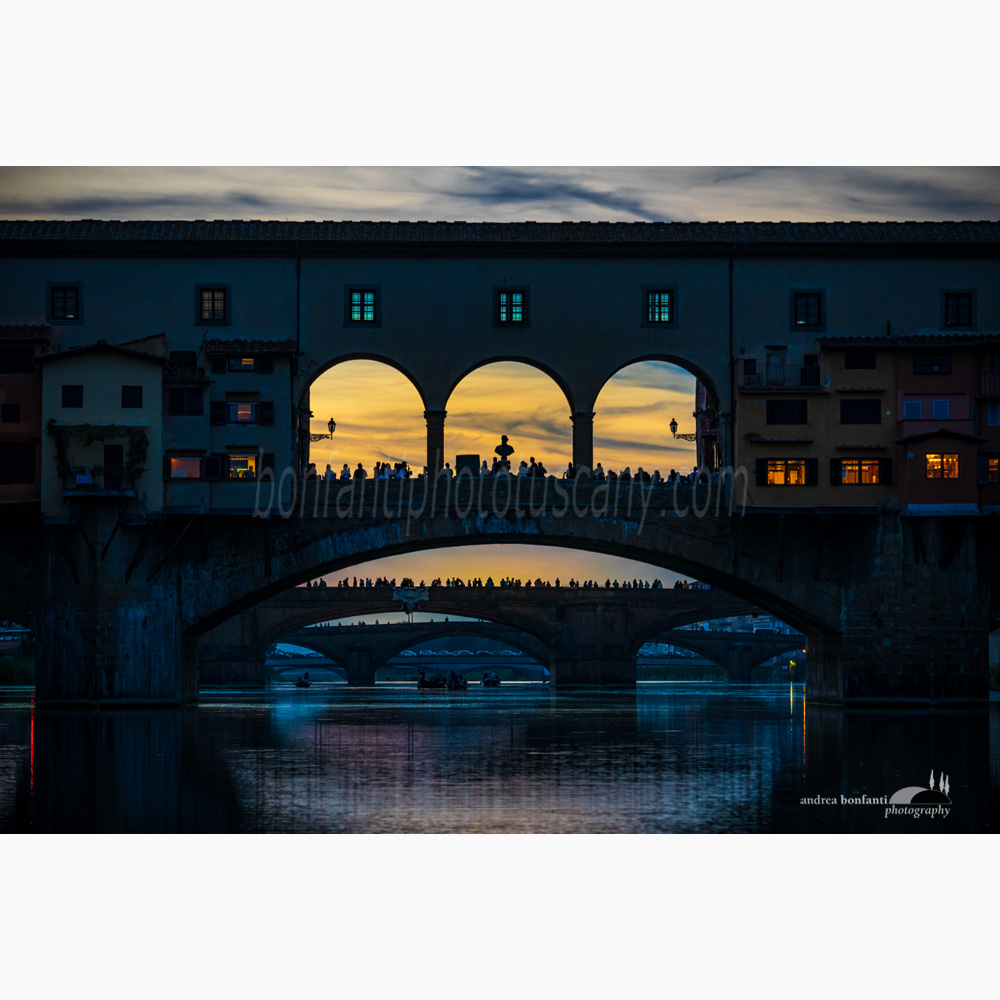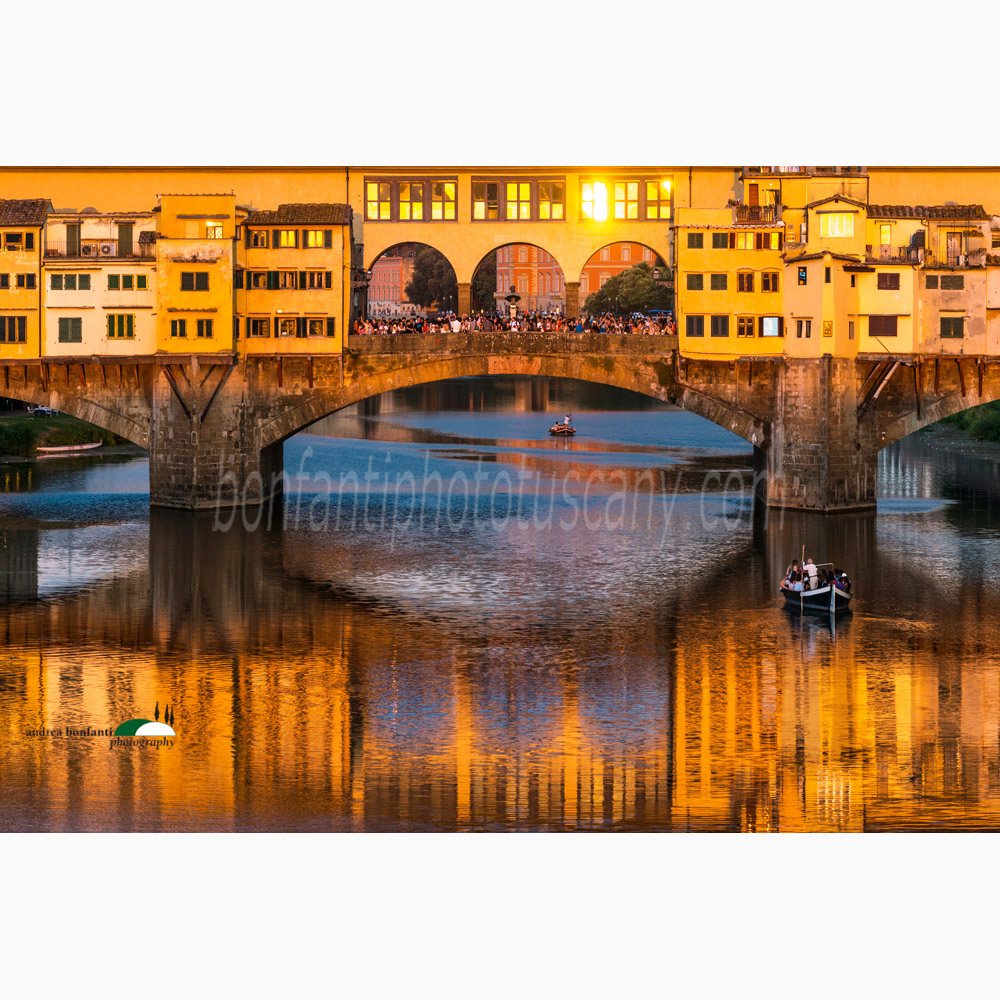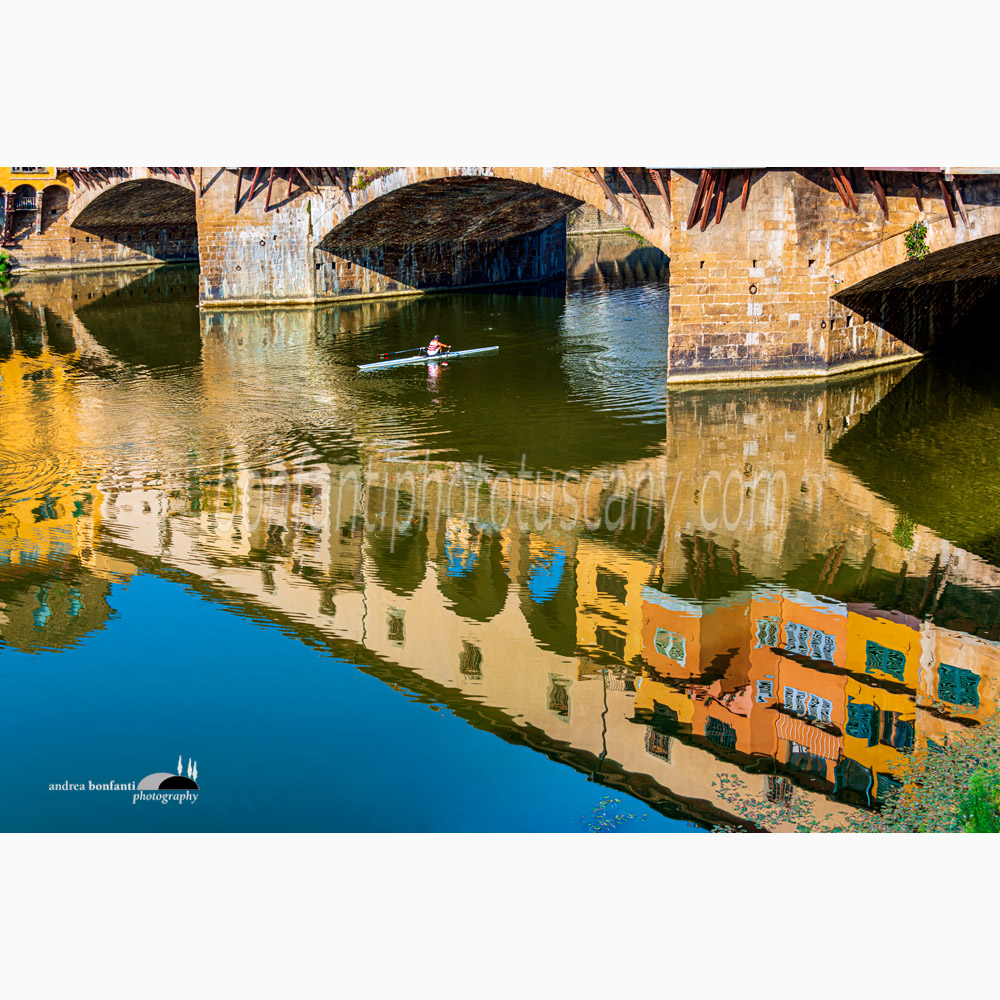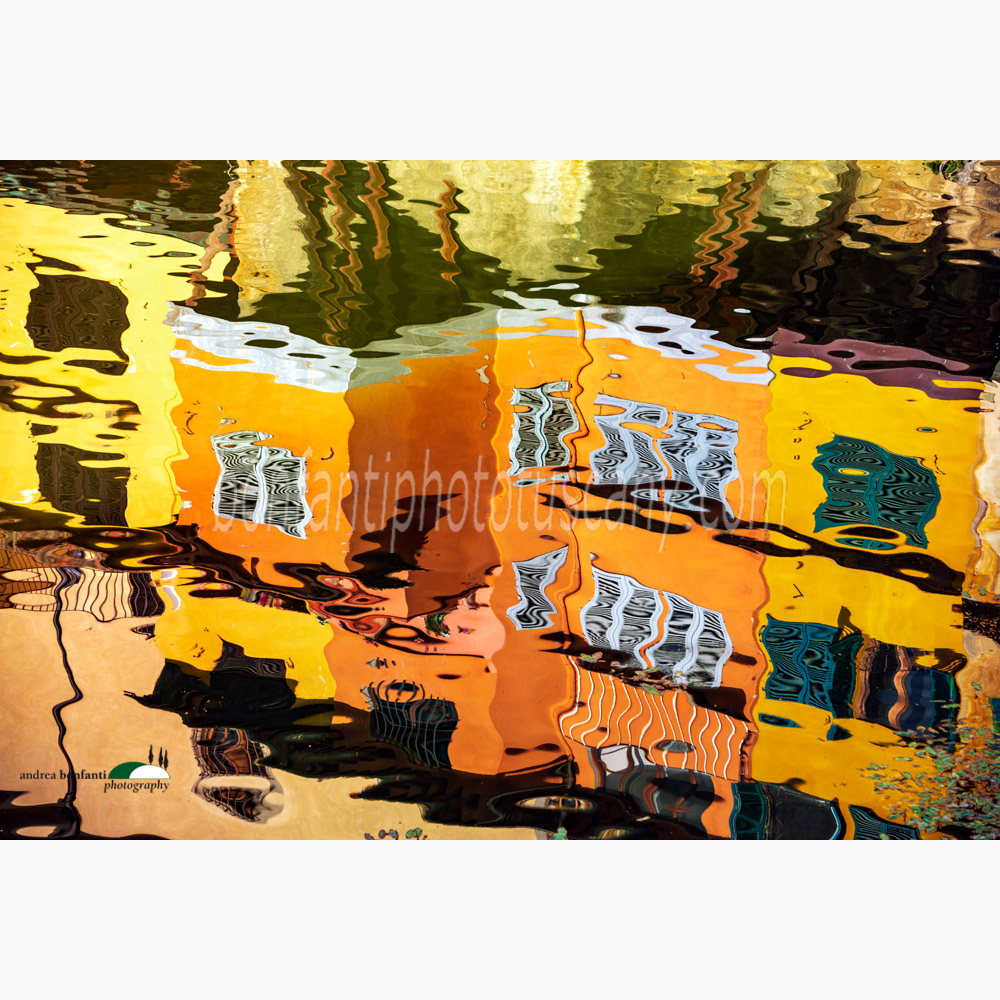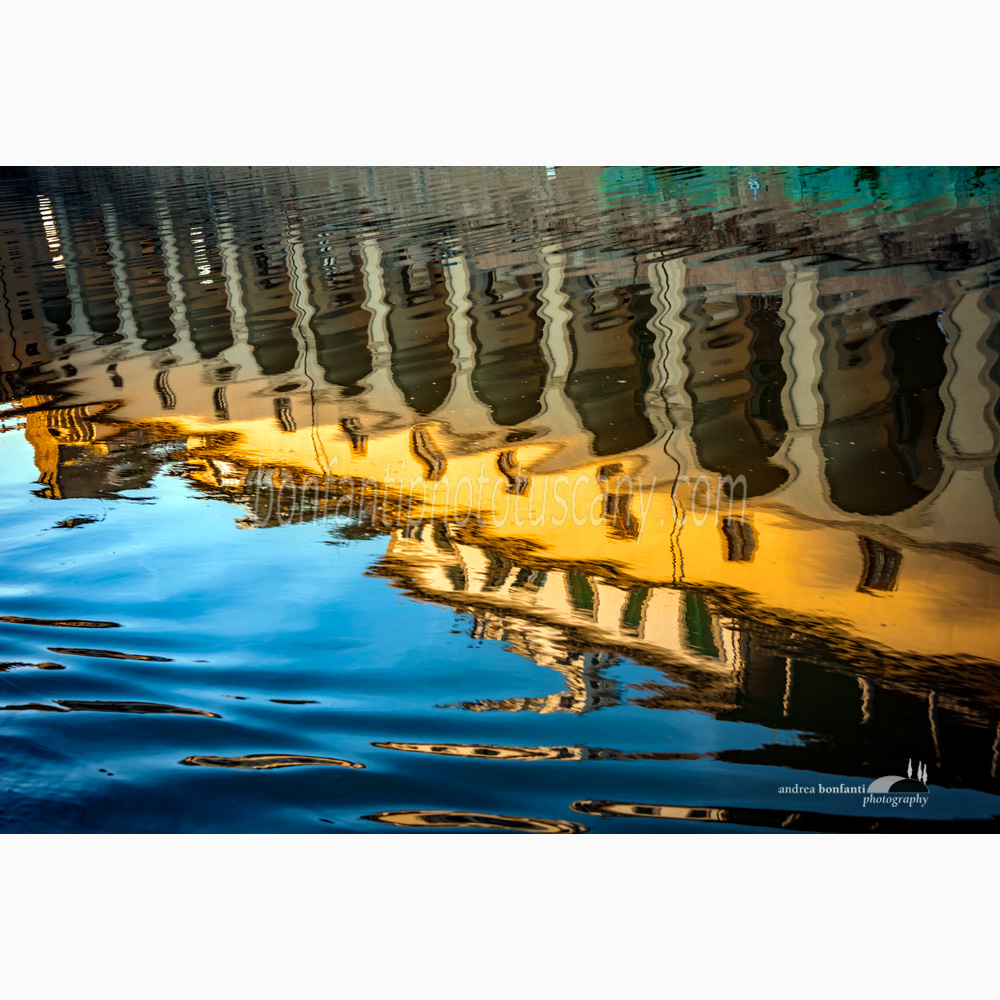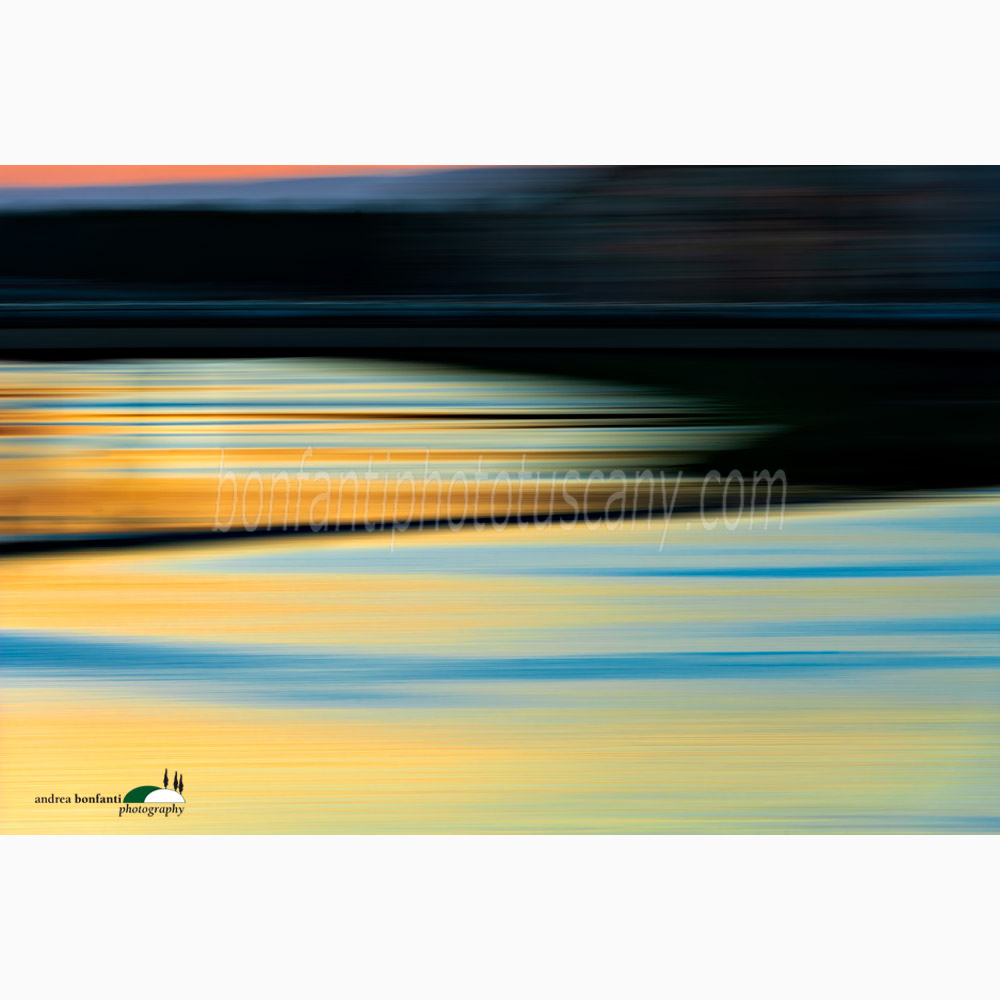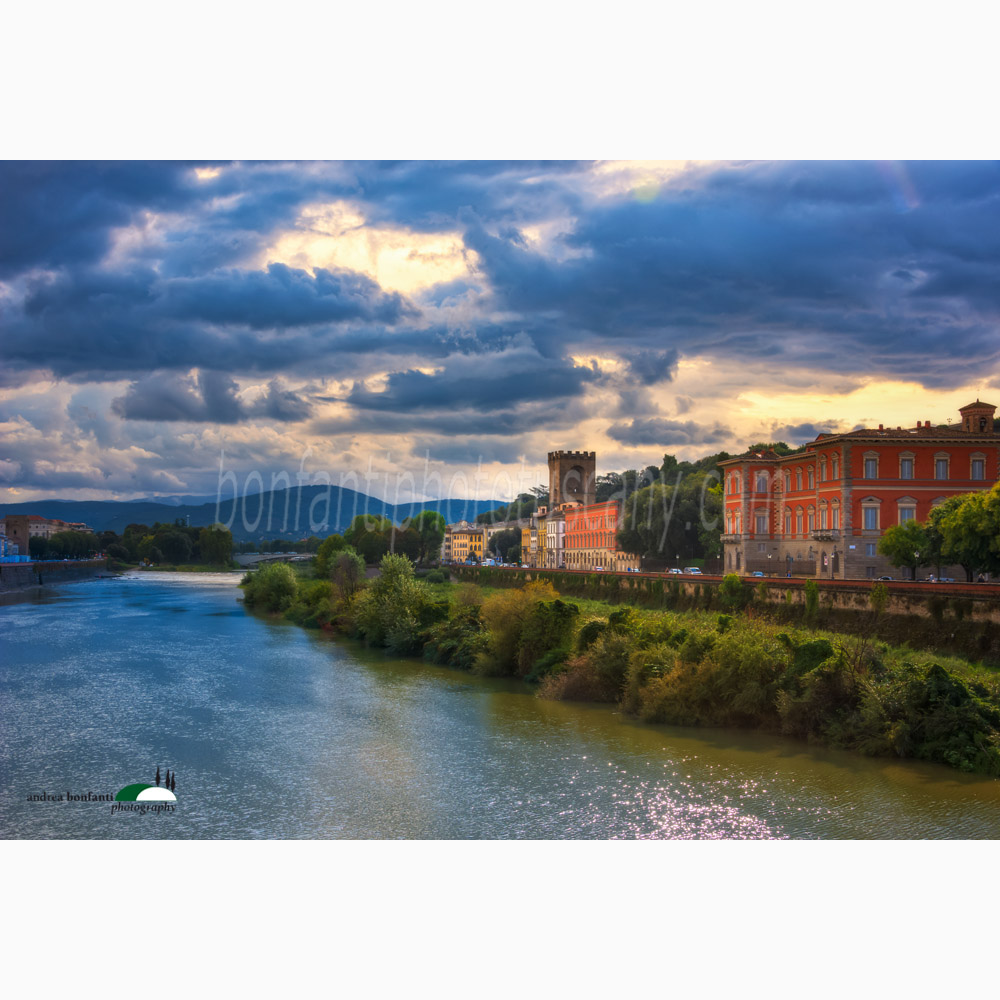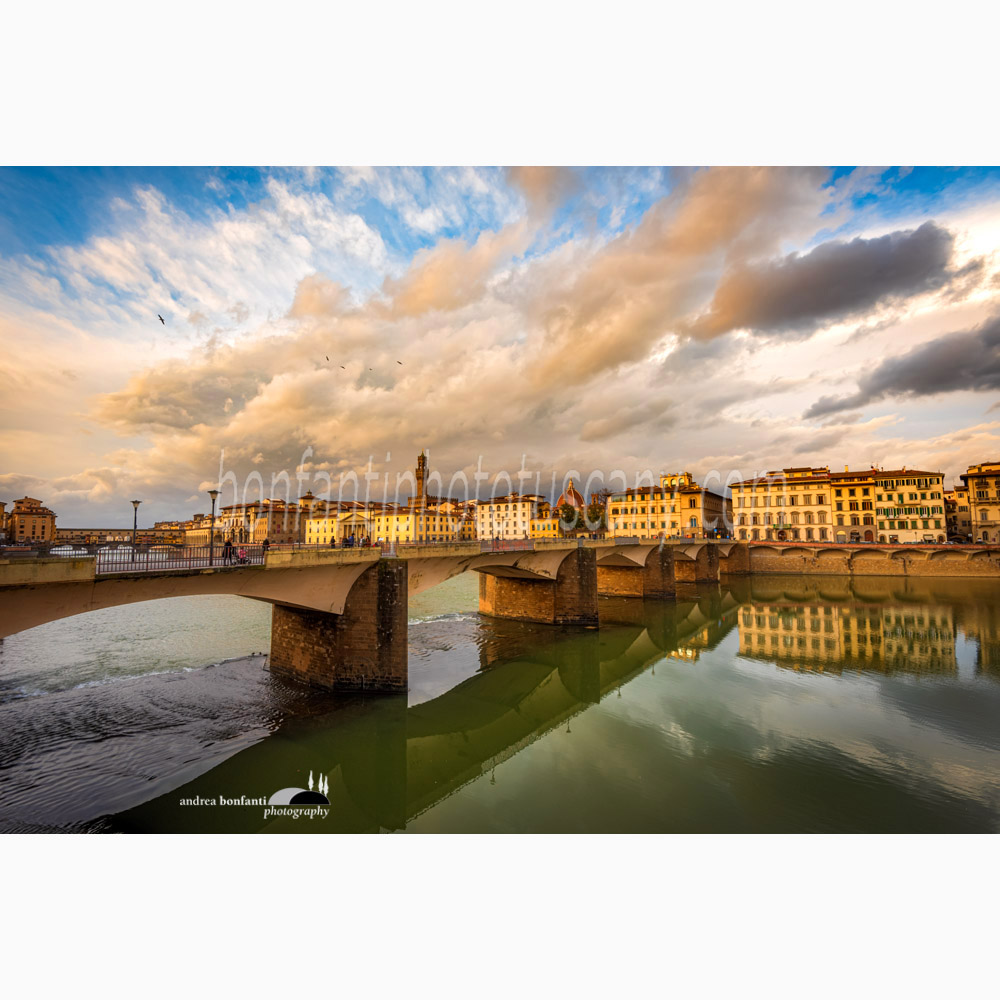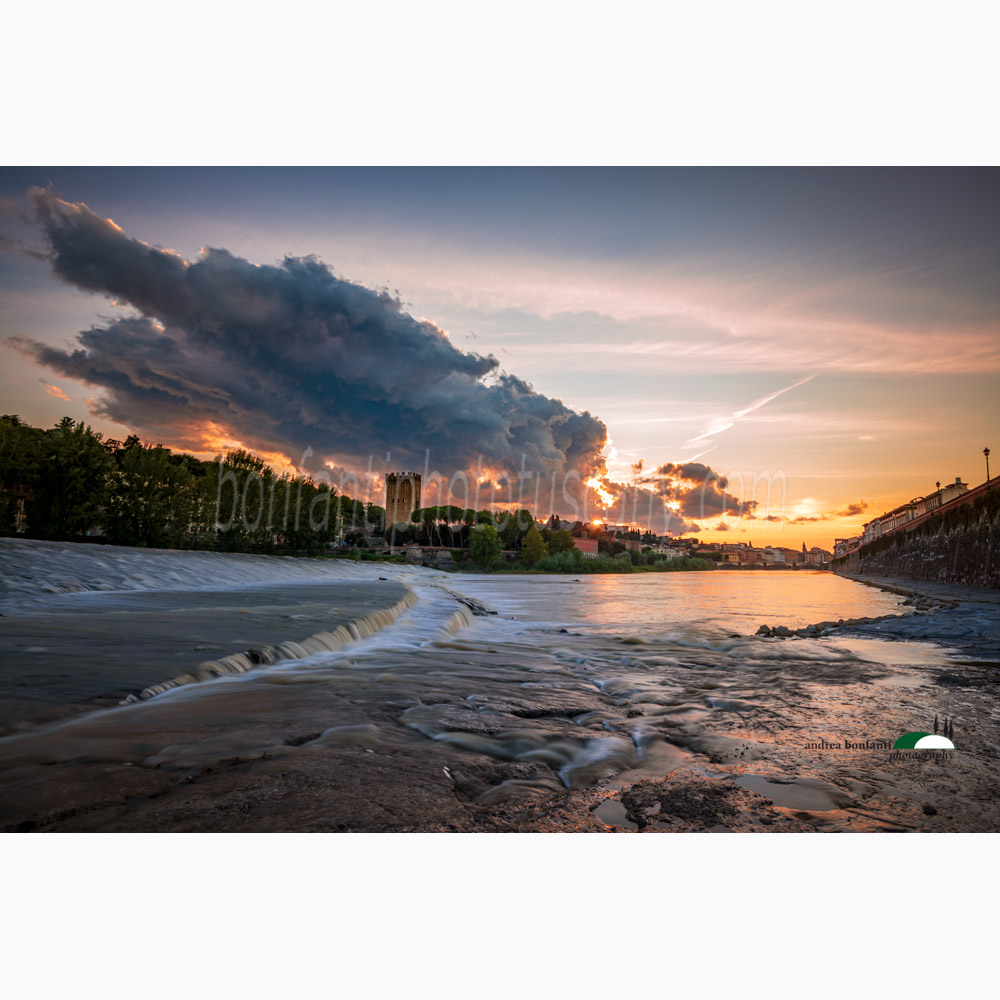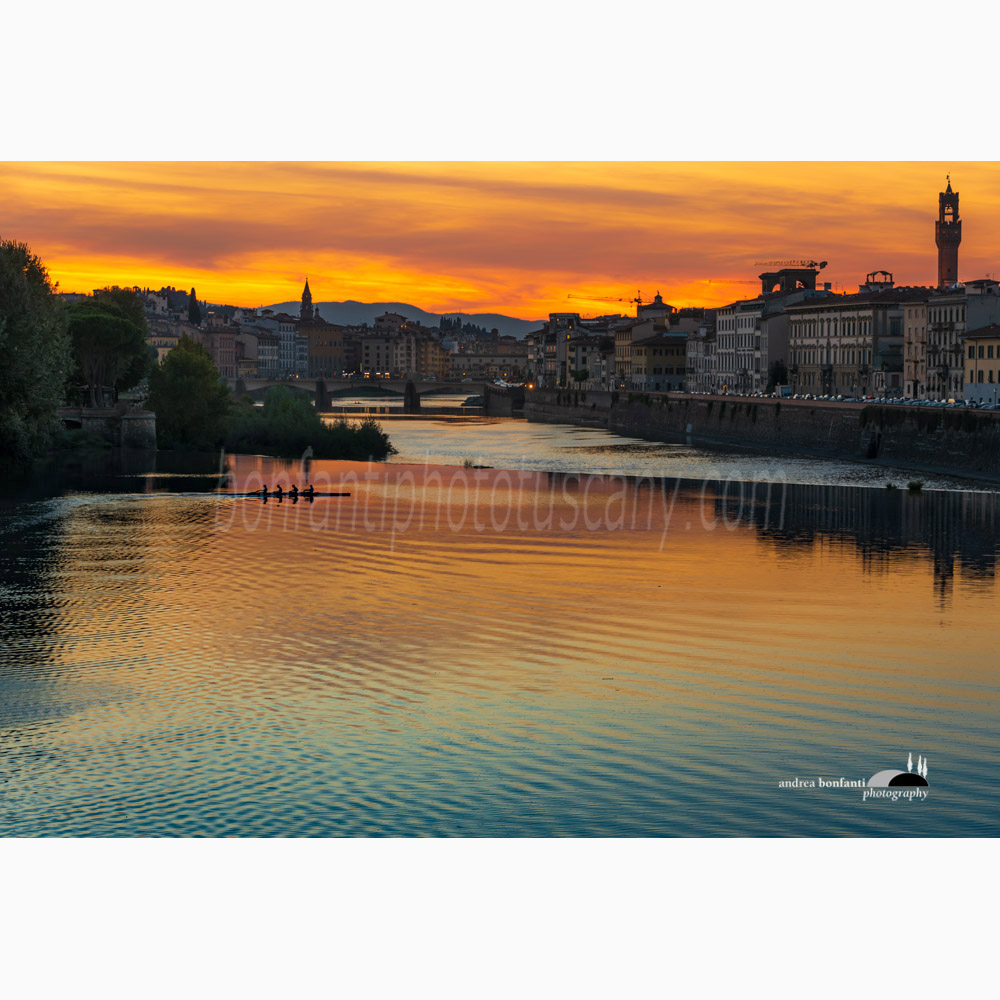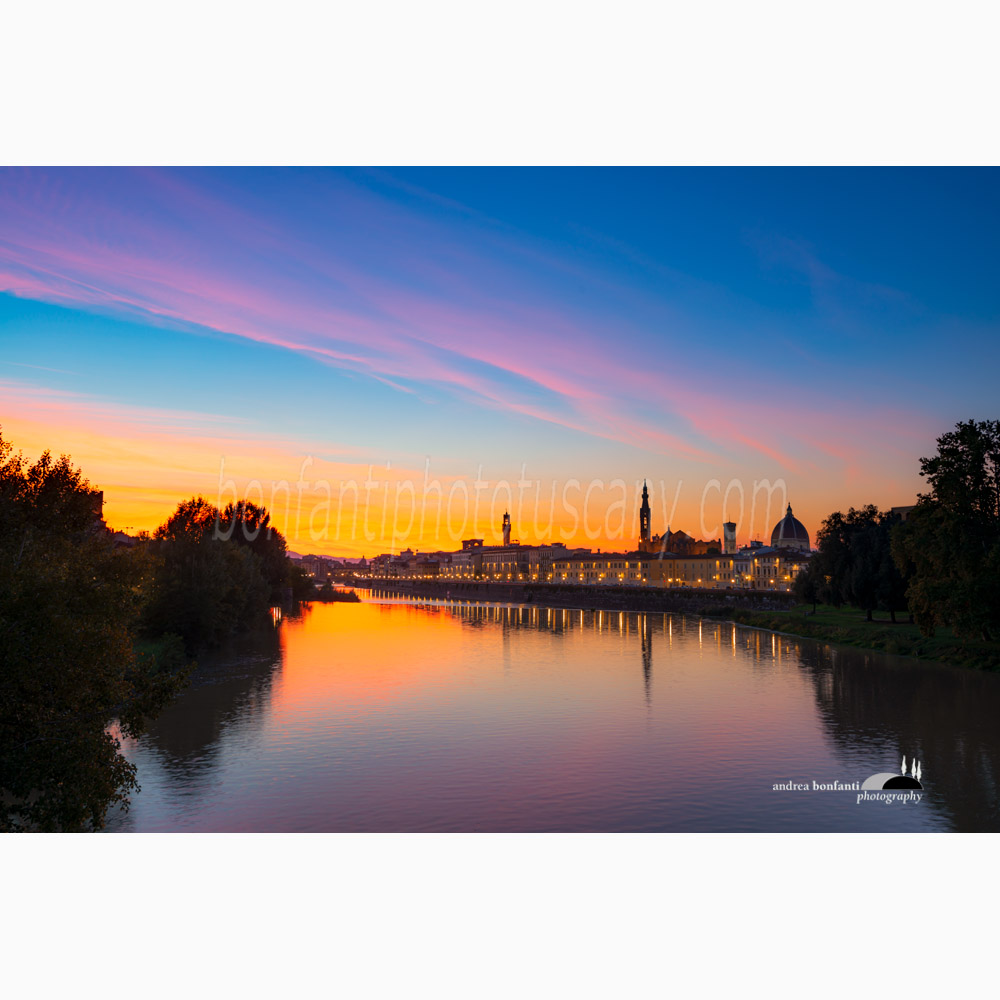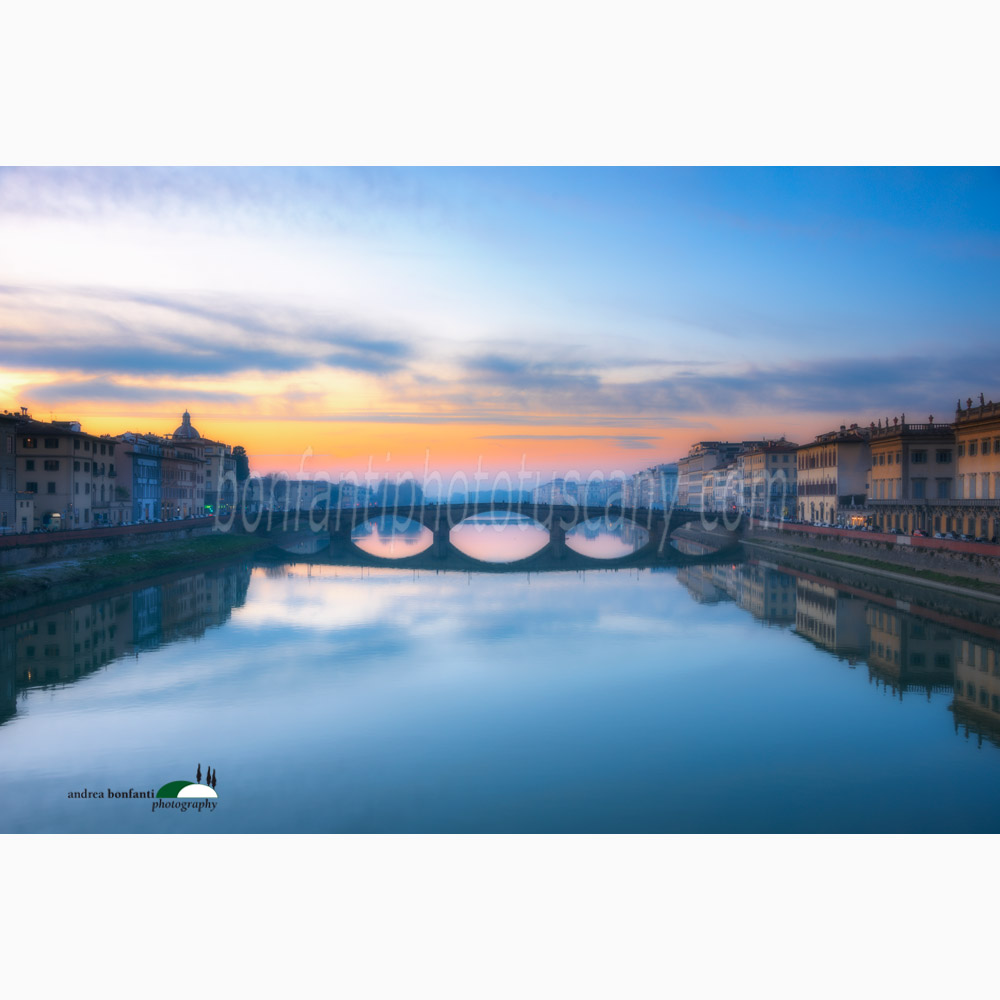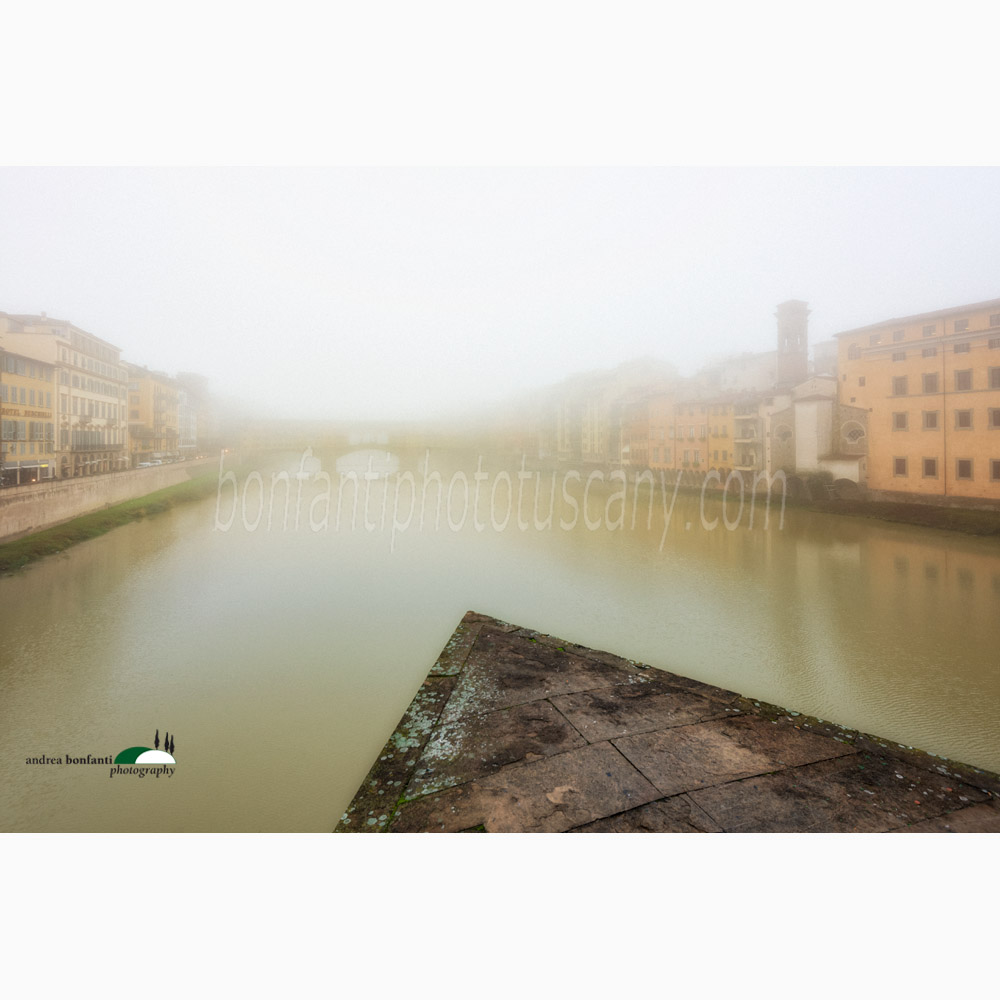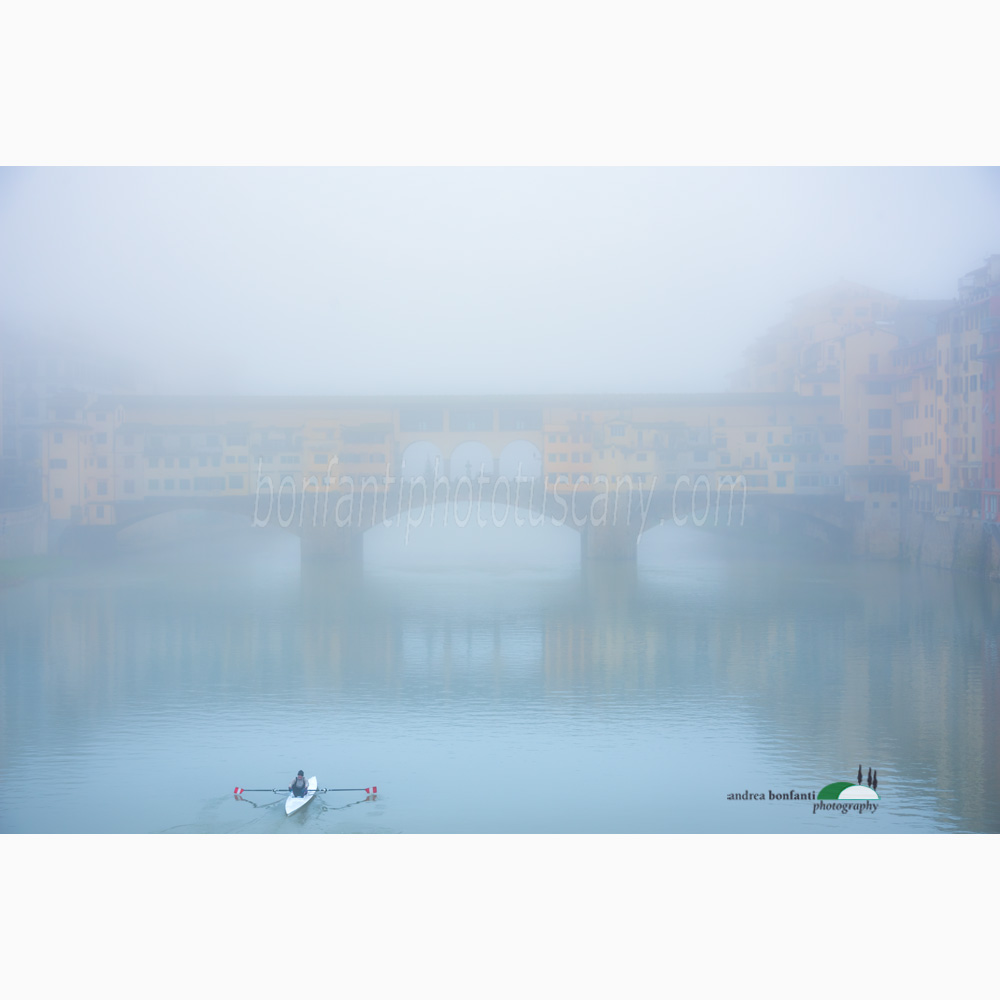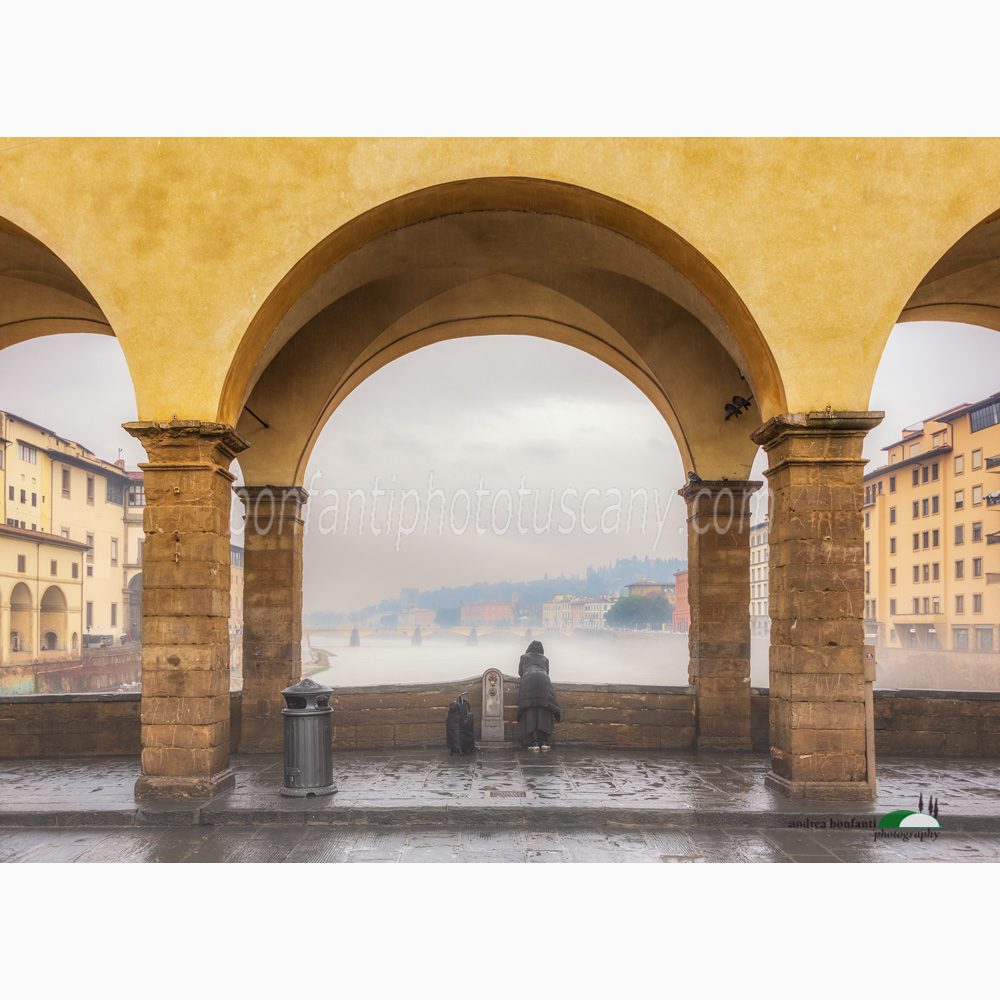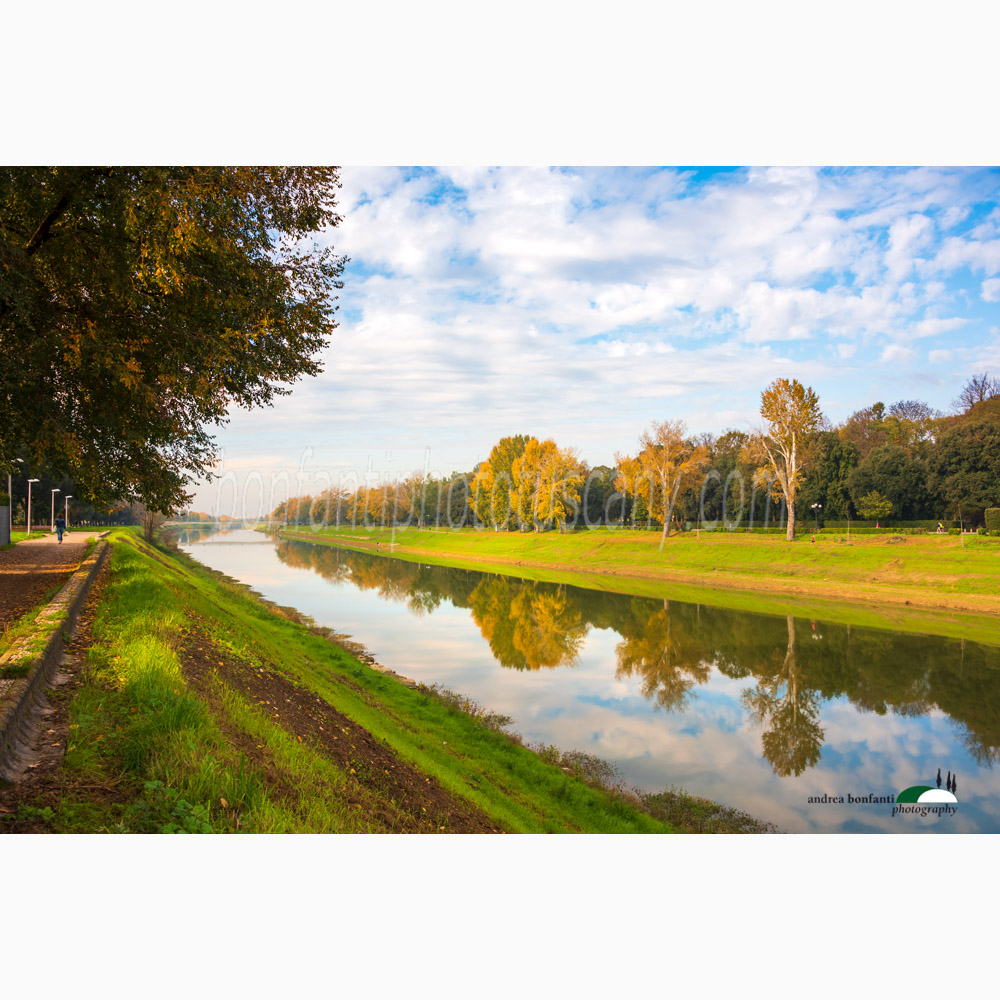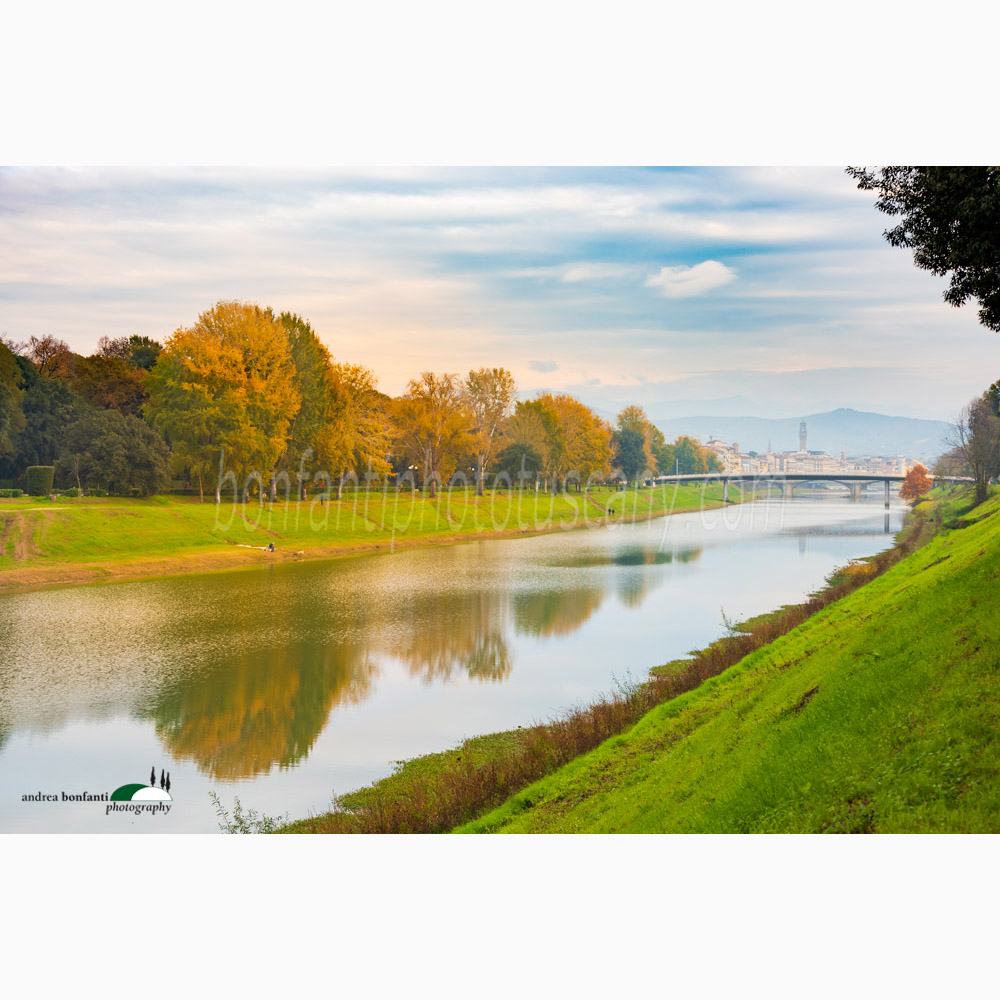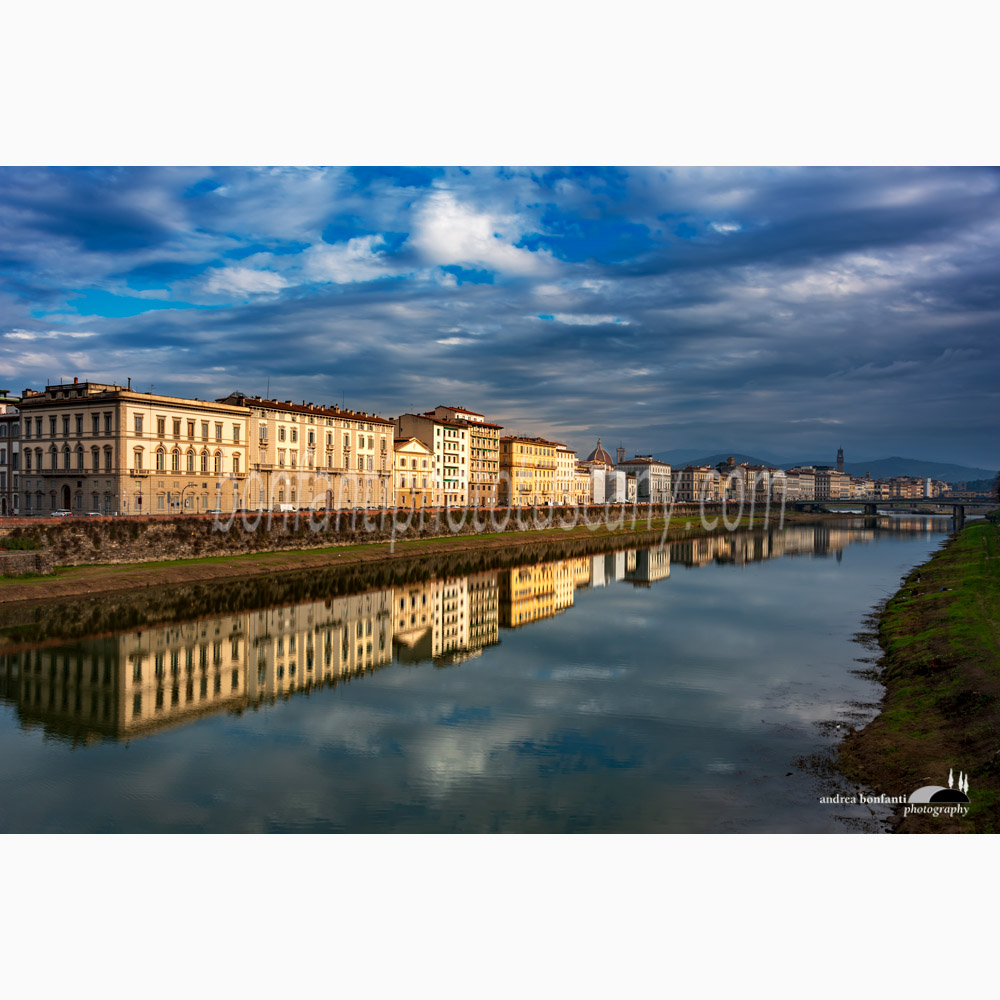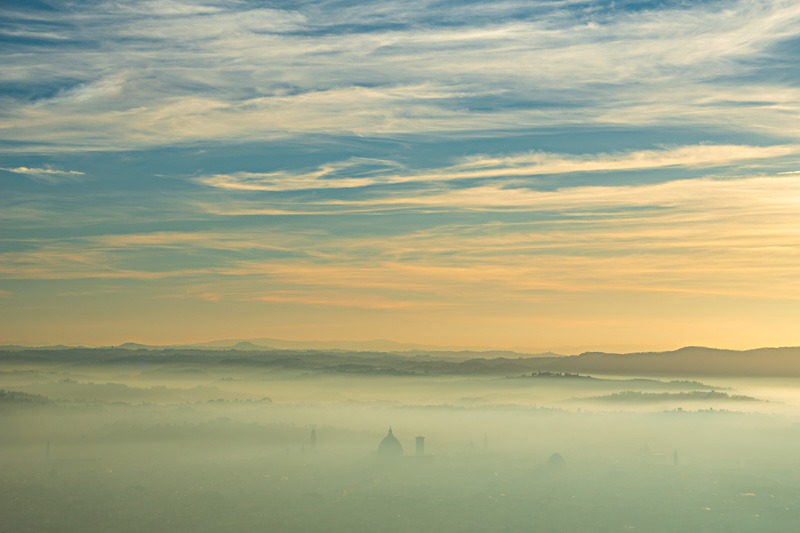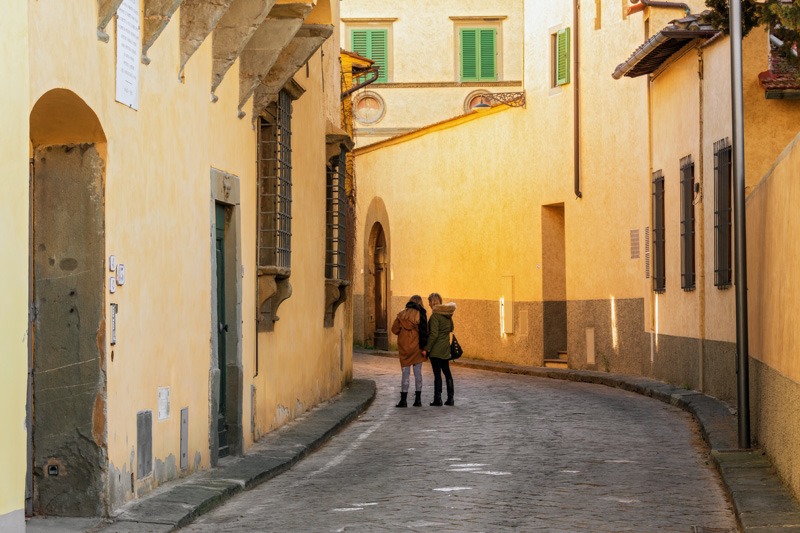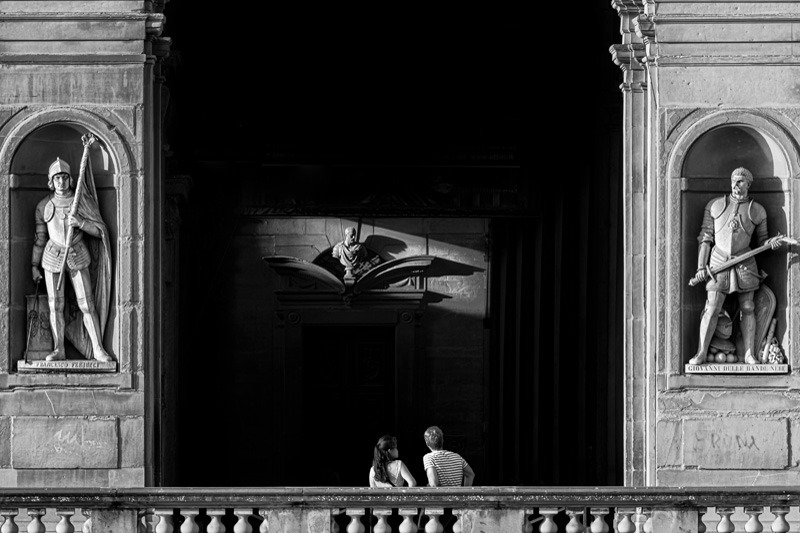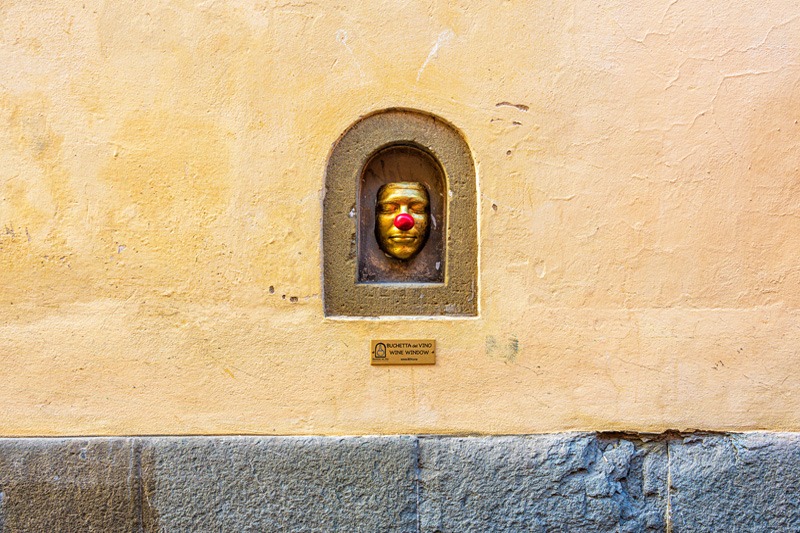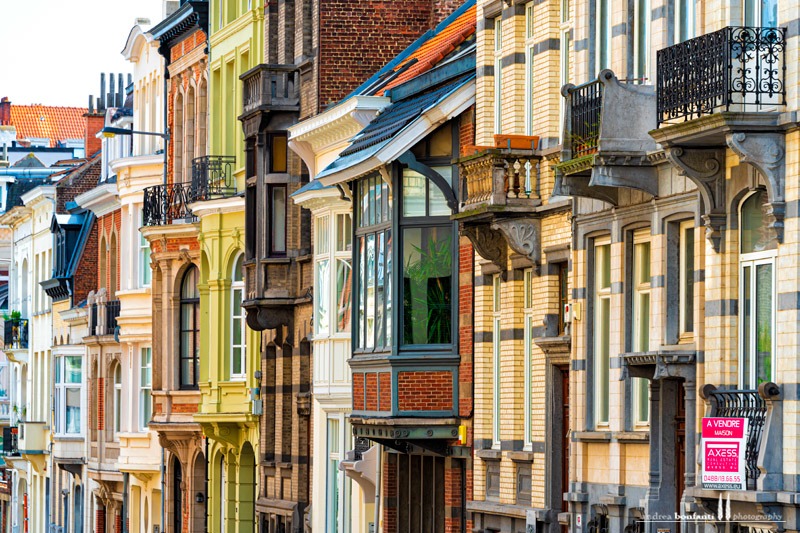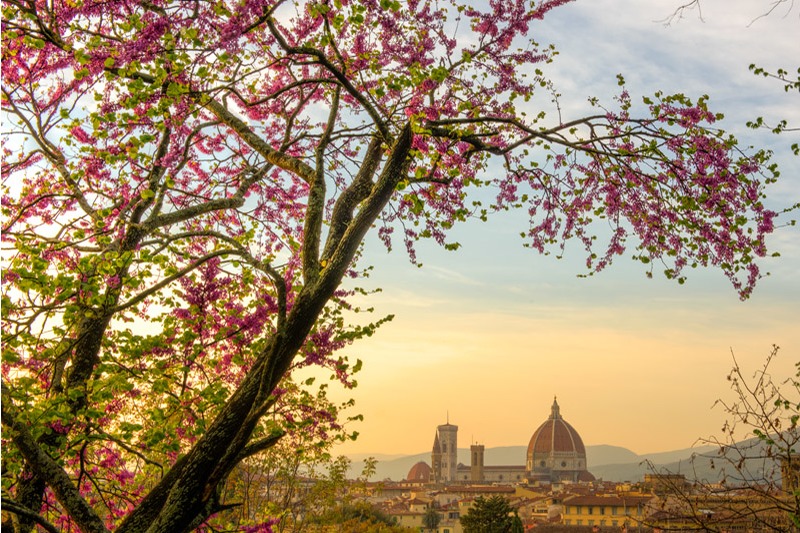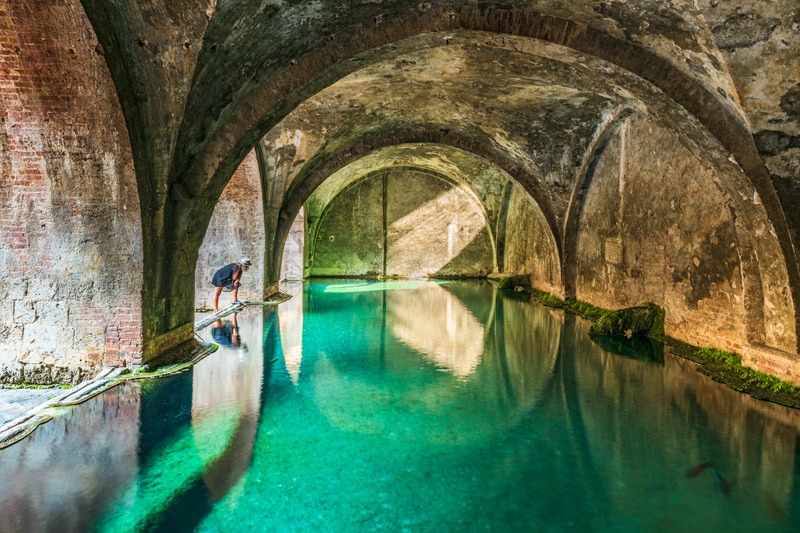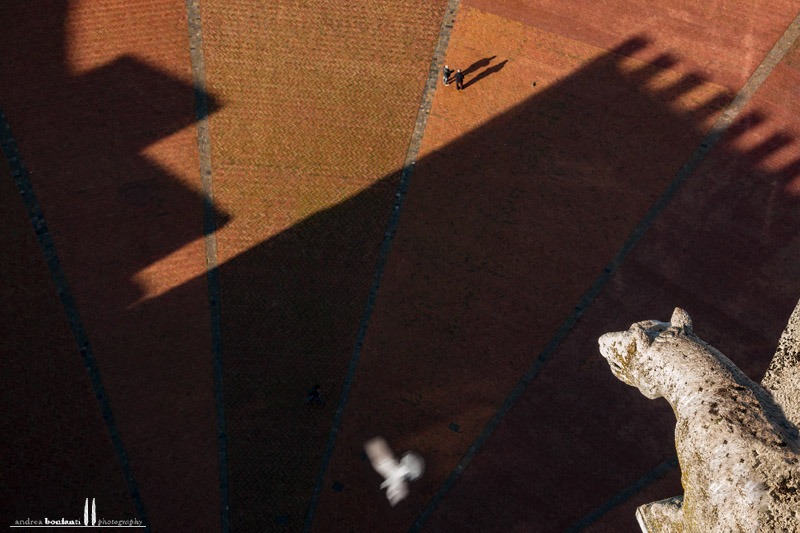Florentines hometown river
Florentines consider the Arno their hometown river. It’s their “household river” not only because it enters the city from the main city gate, dividing the historical center enequally in two parts, but also - and above all- because of its temperament which is very much like their own: original, bizarre, unpredictable. Hot-tempered, at times.
During the last millenium, 42 major or minor floods have been accounted for. During the last disastrous flood in 1966, Florence’s bridges remained miraculousy standing. Fortune was not on their side back in 1333 when only the Ponte alle Grazie was saved from the destructive rage of the river.
Ponte Vecchio was reconstructed a few years later after that ill-fated date. Strong, solid, and resisting all other threatening elements, natural or man-made. It’s the most characteristic bridge in Florence, the one that most recall the city of the Middle Ages. Its quaint little shacks projecting out over the Arno, its subtle, poetic pastel colors reflected in the water, its central loggia, an unxpected coup de théatre that breaks the severe walled backdrop and opens up onto the river revealing the entire city.
Medieval craftsmen exploited the river even more than they did their apprentices: abundant flowing water was needed for tanning and dyeing leather, and in exchange for the Arno’s free and fresh supply all types of tintes and odorous toxic subtances were emptied in it. Far from a “Blue Ribbon”! (as the Arno is popularly known by Florentines).
The river means life and wealth, for the Florentines at that time. Today the palaces of the Lungarni reflect their vanity on the water and the river is crossed only by rowers, while some small boats of the “renaioli” accompany tourists at sunset under the Ponte Vecchio arcades.
To see all my Lungarni of Florence photo archive please click here
To see my Florence Ponte Vecchio photo archive please click here
